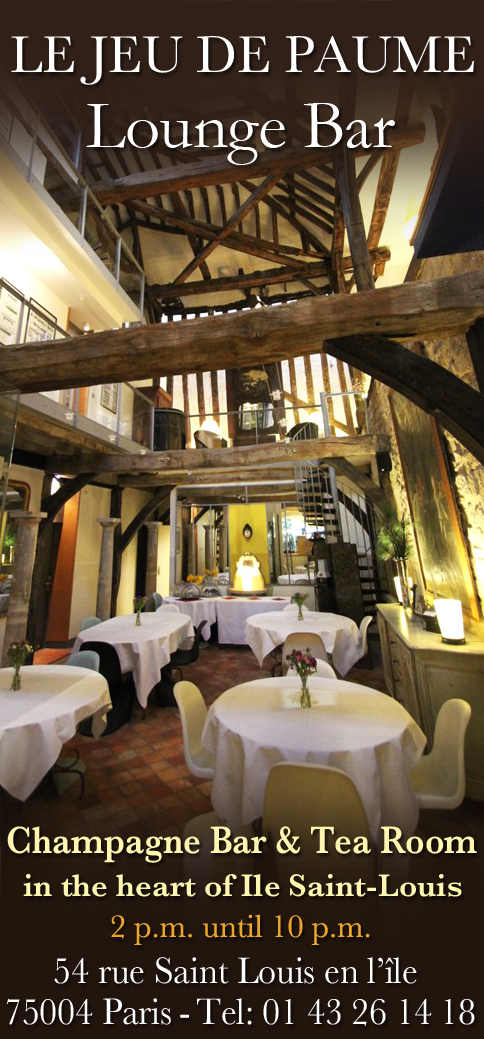 The Marais Gardens
The Marais Gardens
Le Marais has many parks and gardens where it is pleasant to relax after a stroll through the neighborhood streets. Each one lays claim to its own history, myths, and it is a true cultural journey just visiting them. Give yourself a nature break and let yourself get swept away by the charm of these small paradises.
Jardins des Archives
16 rue des Francs-Bourgeois 75003
Open Tuesday to Sunday from 10h to 17h30
Jardin Albert-Schweitzer
5, rue des Nonnains d’Hyères 75004
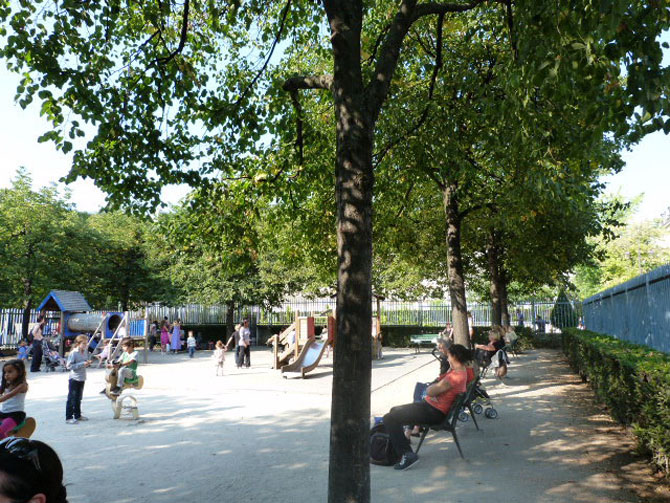
Just steps from the Cité Internationale des Arts, this French garden created in 1968 retains the Marais spirit of the seventeenth century. It has a playground shaded by yews and poplars. It was built in honor of Albert Schweitzer, missionary doctor and Nobel Peace Prize winner.
Jardin Anne Frank
14 impasse Berthaud 75003
Open 10h to 17h (winter) and 10h to 20h30 (summer)
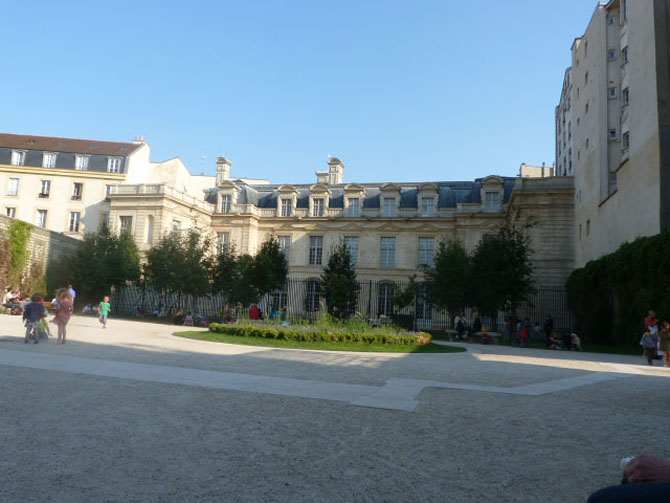
This sumptuous garden pays tribute to Anne Frank, the famous young girl from Amsterdam who fell victim to the Nazis. It consists of three parts. The first is in a contemporary style and features a transplanted chestnut tree that she admired from her window. The central part has existed since the seventeenth century and the third part consists of an orchard. The perfect place to spend a relaxing afternoon in the middle of this sublime scenery and perhaps take the opportunity to visit the nearby doll museum.
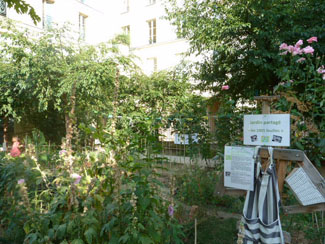
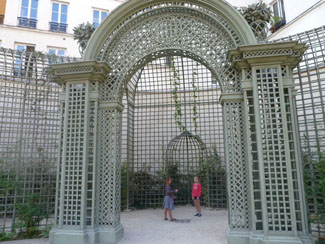
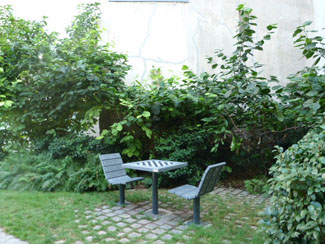
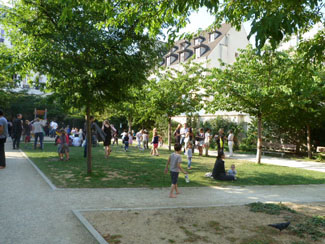
Jardin de l’hotel de Sens
7, rue des Nonnains d’Hyères 75004
Open 8h30 to 19h30 (winter) and 9h to 20h30 (summer)
This charming French-style garden borders the Hôtel de Sens, which was occupied from 1605 to 1606 by Marguerite de Valois, known as Queen Margot, whose marriage to Henry IV was annulled by the Church in 1599. It is perfect for having a break from the busy streets and admiring its magnificent floral creations.
Jardin Lamoignon
24, rue Pavée 75004
8h00-19h30
This garden is bordered by the bright walls of the Hôtel Lamoignon, of Renaissance style and built in 1584 by Diane de France, daughter of King Henry II of France. It was purchased by the City of Paris in 1928 and since 1969 houses the historical library of the city of Paris which faces the Carnavalet Museum. It is like a small private garden, ideal for a quiet break from the crowd in rue des Francs-Bourgeois.
Jardins des Archives nationales
60, rue des Franc-Bourgeois 75003
8h-17h
This garden is bordered by the bright walls of the Hôtel Lamoignon, of Renaissance style and built in 1584 by Diane de France, daughter of King Henry II of France. It was purchased by the City of Paris in 1928 and since 1969 houses the historical library of the city of Paris which faces the Carnavalet Museum. It is like a small private garden, ideal for a quiet break from the crowd in rue des Francs-Bourgeois.
In 1553, it was renamed the Hôtel de Guise, and later became the seat of the Catholic League during the Wars of Religion. In 1588, the massacre of St. Bartholomew was planned there; it was also the site where the Day of the Barricades began, which forced King Henry III to flee Paris.
It was Mary of Guise who beautified its gardens. In 1667, she turned to Louis XIV’s gardener, André Lenôtre for the task. The gardens then became the setting for contemporaries such as Corneille, Tristan Lhermite, and composer Marc-Antoine Charpentier to rub shoulders.
In March 1700, François de Rohan-Soubise bought the hotel and changed the orientation of the main façade as well as the formation of its gardens. The front of the Hôtel de Soubise was adorned with sculptures by Robert Le Lorrain representing the four seasons, and the pediment with allegories of Glory and Magnificence.
Hôtel de Soubise was seized during the French Revolution and hence became the property of the state; it was assigned to the Archives of the Empire by the decree of 6 March 1808. It was under Louis-Philippe in 1848 that an expansion of the Archives took place. In 1860 and 1880, other wings opened as a repository. Small private buildings lining the streets of rue Francs-Bourgeois were gradually acquired by the National Archives, where different services were relocated.
Jardin des rosiers
35, rue des Franc-Bourgeois 75004
Open 14h to 19h (winter) and 14h-20h30 (summer)
This peaceful haven is in the heart of the Maison de l’Europe, the former Hôtel de Coulanges. This garden offers a flourishing setting and charming wooden toys for toddlers. Sugar cane and manicured Mexican orange trees constitute a perfect setting for quiet reading and forgetting the excitement of the city for a short time.
Jardin du clos des Blancs Manteaux
21, rue des Blancs Manteaux 75004
Open July to December: 13h30 to 18h30 (Saturday) and 10h30 to 18h30 (Sunday)
Hidden behind the rue des Blancs Manteaux, this area has a variety of 250 species of rare and sumptuous plants, among them both medicinal and aromatic ones as well as spices. Workshops and educational activities are also available here; this paradise is perfect for educating children and adults alike about biodiversity. How wonderful it is to be overwhelmed by the scents of the garden, without doubting for a second that one is still in the center of Paris.
Jardin saint Gilles Grand Veneur – Pauline Roland
Rue des Arquebusier 75003
Open 9h to 17h (winter) and 9h to 21h (summer)
One must get lost in the narrow streets of the Marais to discover this garden hidden between the buildings. Created in 1988, this garden offers a multitude of roses on arbors and a view of the former residence of the «Great Hunter». It was built in the seventeenth century for the Marquis d’Ecquevilly, Captain General of Hunting for the King.
The garden also pays tribute to the teacher and feminist Pauline Roland (1805-1852). Following her arrival in Paris in 1832, she began writing for the first feminist newspapers. Close to Georges Sand, she was actively involved in feminist and socialist agitation, working for the publication «La Voix des Femmes». Victor Hugo devoted a few lines to her in "Castigations": She knew neither pride nor hate; She loved him, she was poor, simple and serene.
La place des Vosges - 75004
The construction of the "Place Royale" began in 1605 under the reign of Henry IV and was inaugurated in 1612 on the occasion of the betrothal of Louis XIII and Anne of Austria. It was renamed several times during the French Revolution - "Place des Fédérés", "Place du Parc d’Artillerie", "Place de la Fabrication-des-Armes" and "Place de l’Indivisibilité". " In 1800, in honor of the department of Vosges, it was renamed "Place des Vosges". Designed by the architect Louis Métezeau it is, after the Place Dauphine, the oldest square in Paris. It was classified in 1954 as a historic monument.
Among the famous residents of the buildings bordering the square Louis XIII, are the former IMF director Dominique Strauss-Kahn and his ex-wife Anne Sinclair, the former Minister of Culture Jack Lang, the Mayor of Paris Bertrand Delanoë, the actress Annie Girardot, Georges Simenon, and Colette. It is also possible to visit the former home of Victor Hugo in the Hôtel de Rohan-Guéméné.
Square Barye
2, boulevard henri IV 75004
8h00-18h30
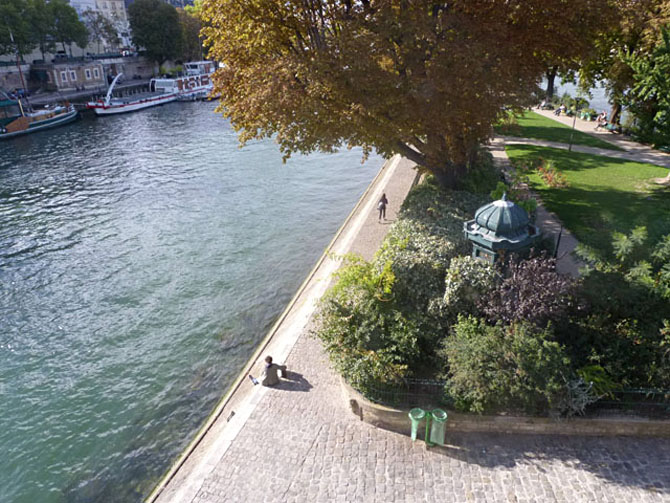
Located at the tip of the Ile Saint-Louis, this square offers a magnificent view of the Seine river. Amazing!
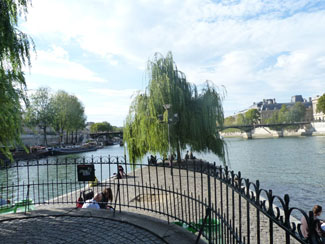
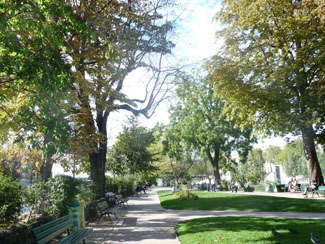
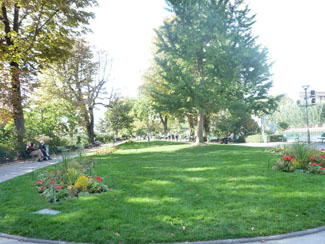
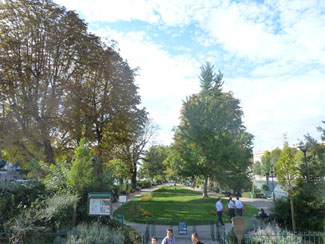
This square was opened on the former premises of a Celestine monastery possessing a superb cloister with Corinthian columns, a church and a magnificent chapel. Before the French Revolution, the Eglise des Célestins and the abbey of Saint-Denis housed the tombs of several distinguished public figures; however in 1866, a boulevard was designed to cut through this area. The tombs were therefore moved, divided between the Louvre, Versailles and Saint-Denis.
Square Charles-Victor Langlois
6, rue des Blancs Manteaux 75003
Open 8h to 19h30 (winter) and 8h-20h30 (summer)
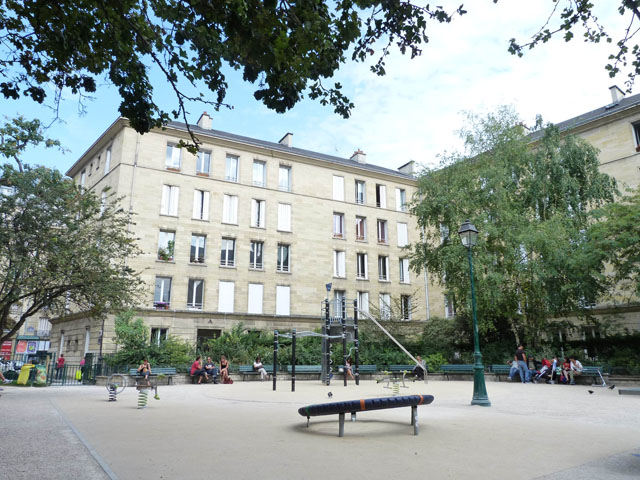
At the heart of the Marais, this square offers many games for children as well as a nice break after a shopping spree in rue Vieille du Temple and rue des Francs-Bourgeois.
Created in 1961, it is planted with birch, hawthorn, and silk trees; there you can see the ruins of the Fontaine des Guillemites. The square, located at the site of the former convent buildings of Blancs Manteaux, is named for a former director (from 1913 to 1928) of the National Archives.
Square du temple
64, rue de Bretagne 75003
Open 8h to 20h30 (winter) and 8h to 21h30 (summer)
At the heart of the "Haut Marais", this sumptuous square offers places for games (a sandbox, ping-pong, chess game) and a gazebo built in 1900 as well as a nice lawn good for picnics. It is also a great place to enjoy the festival "Soirs d’Eté " in July.
There is also a duck pond, surrounded by a large variety of plants and rare trees. There are 71 types of trees and 191 different types of plants, including many exotic species.
In the thirteenth century the Enclos du Temple housed the Knights Templar, the dreaded financial and political power that suffered a bloody repression starting in 1312. In 1667, a palace was built and became the "Temple prison" during the Revolution. It was also the last residence of Louis XVI and the Dauphin Louis XVII. The temple tower, built by the Templars beginning in 1240, served as prison to the royal family in 1792 and 1793. Napoléon Bonaparte decided to demolish it in 1808, as in the eyes of the monarchists it embodied a place of royal suffering.
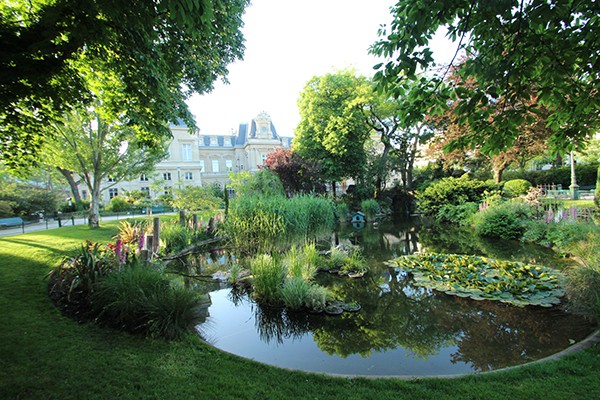
Square Emile Chautemps
98 bis, boulevard de Sébastopol 75003
Open 8h to19h (winter) and 8h to 20h30 (summer)
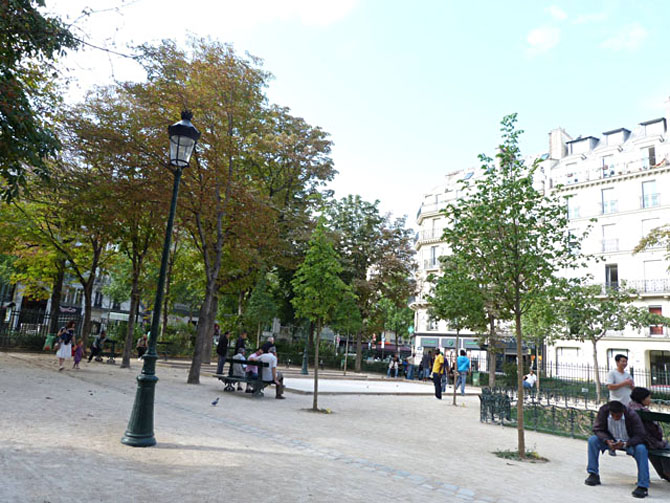
This spacious square offers many areas for activities such as petanque and table tennis, as well as a playground for children. Created in 1858, it is the first Parisian garden to be built "à la française" according to the will of Napoleon III. The bust of a somewhat unknown author, Marc Seguin, is to be found; the bronzes of Charles Guméry and Augustus Ottin also adorn basins there. The Jura granite column commemorates the victories of the French during the Crimean War. This square is ideal for relaxing after a visit to the "Gaité Lyrique" which happens to be right next door.
Ce square est idéal pour se reposer après une visite à la gaité lyrique qui se trouve être juste à côté !
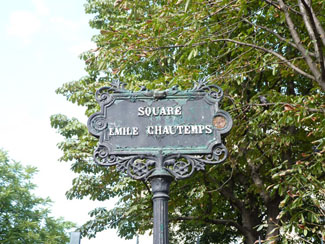
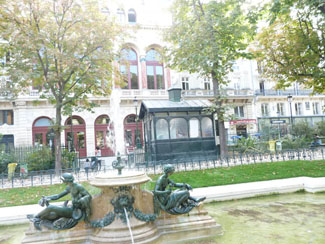
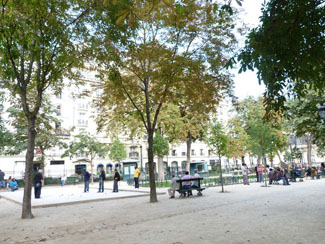
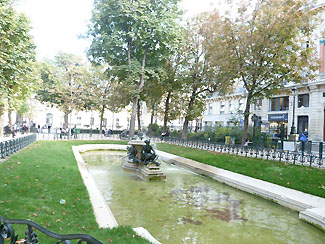
Square Georges Cain
7, rue Payenne 75004
Open 7h30 (9h30 on Saturday and Sunday) to 17h30 (winter) and 21h30 (summer)
Located in the quiet rue Payenne, this square is a sumptuous haven. It borders the Carnavalet Museum and was named for the curator there from 1897 to 1931.
At the heart of the garden is a bronze statue by Aristide Maillol called "Ile de France". Pieces from the history of Paris dispersed in the square include the remains of the previous Town Hall, Merovingian sarcophagi, and the pediment of the central pavilion of the Tuileries Palace still blackened from the fire that destroyed it.
Square Henri-Galli
9, boulevard Henri IV 75004
8h00-20h30
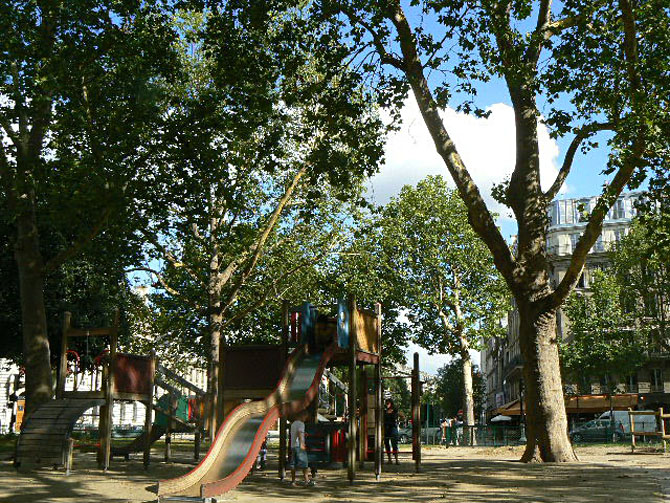
Named after the journalist and politician of the Third Republic, this square is ideal for children as it contains several places to play such as slides and a climbing wall. This square is not however terribly quiet due to the noise of cars around it. Created in 1925, the remains of one of the eight towers of the Bastille prison are to be found there.
Square Jean XXIII
4 place du parvis de Notre-Dame 75004
8h00-18h30
It is a joy to sit in the square Jean XXIII after a visit to Notre-Dame. This area directly behind Notre-Dame is famous for its beauty and grandeur. There are Japanese cherry trees, apple tree flowers and Byzantium hazel among much other vegetation. The Fontaine de la Vierge, created by Vigoureux in 1845, blends perfectly with the stone of the cathedral, visible behind a curtain of ivy that grows along the wall surrounding the square.
The Archbishop's palace bordered the cathedral until 1830. In 1831 the garden, designed by Gabriel Thouin, was ransacked by the anti-legitimist riots. Count Rambuteau, prefect of the Seine from 1833 to 1848, was responsible for the creation of the present-day garden. It was the first neighborhood public garden, and replaced the sub-standard dwellings there dating from the Middle Ages.
Square Leopold-Achille
5, rue du Parc Royal 75003
8h-19h30
A lovely square containing a children’s game, several benches, and adorned with cherubs in an enclosed space among charming buildings including the wall of the Musée Carnavalet.
Siberian elms, Japanese holly, peach and poplar trees are found alongside remnants from the time of Francis I and the statue "Woman Standing".
In the thirteenth century, the area was occupied by large garden lands called "Culture Sainte-Catherine". In the fifteenth century, a royal park of 2000 square meters stretched in its place. In the sixteenth century, Catherine de Medici ordered its destruction and the square became a place rife with vagrancy.
The Royal Park is now renamed for the writer and painter Leopold-Achille, deputy mayor of the third district in the early nineteenth century.
Square Marie-Trintignant
17, rue de l’Ave Maria 75004
Created in 1933, the square de l’Ave Maria was renamed in honor of the actress, who died in 2003. Located in the passage Philippe Auguste, it contains fig trees, summer lilacs and strawberry trees.
Square Roger Priou-Valjean
4-12, rue du Figuier 75004
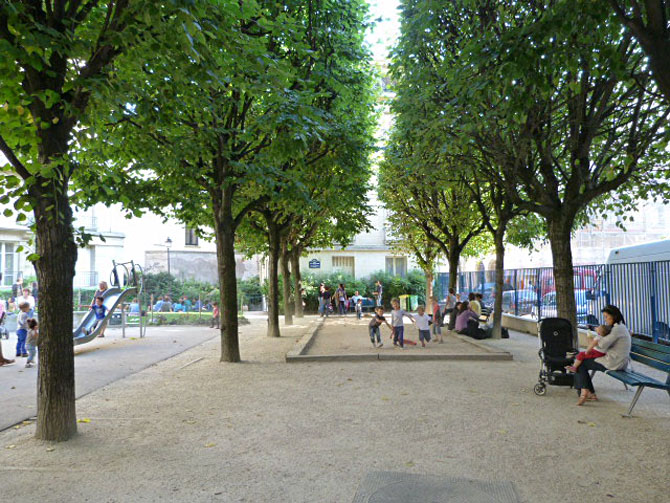
Located between two streets, this square contains a hidden and quiet city playground perfect for relaxing, surrounded by flourishing vegetation.
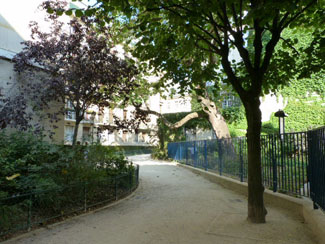
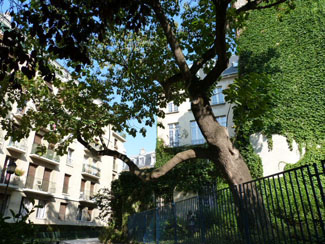
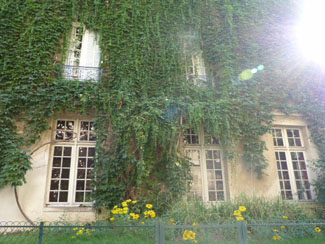
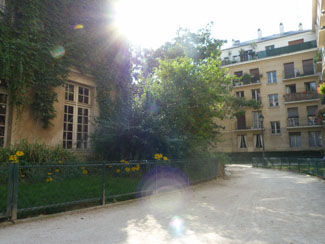
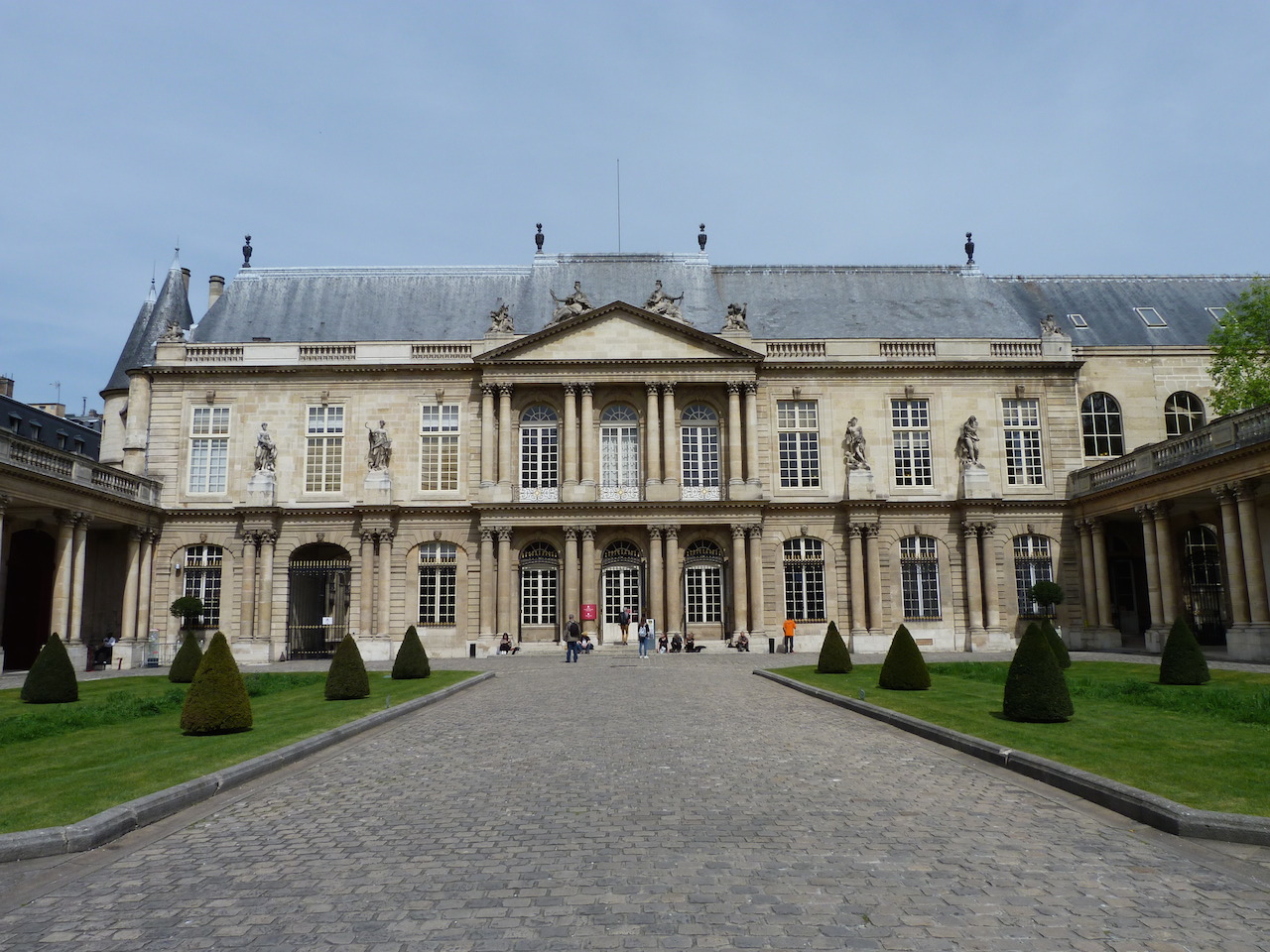
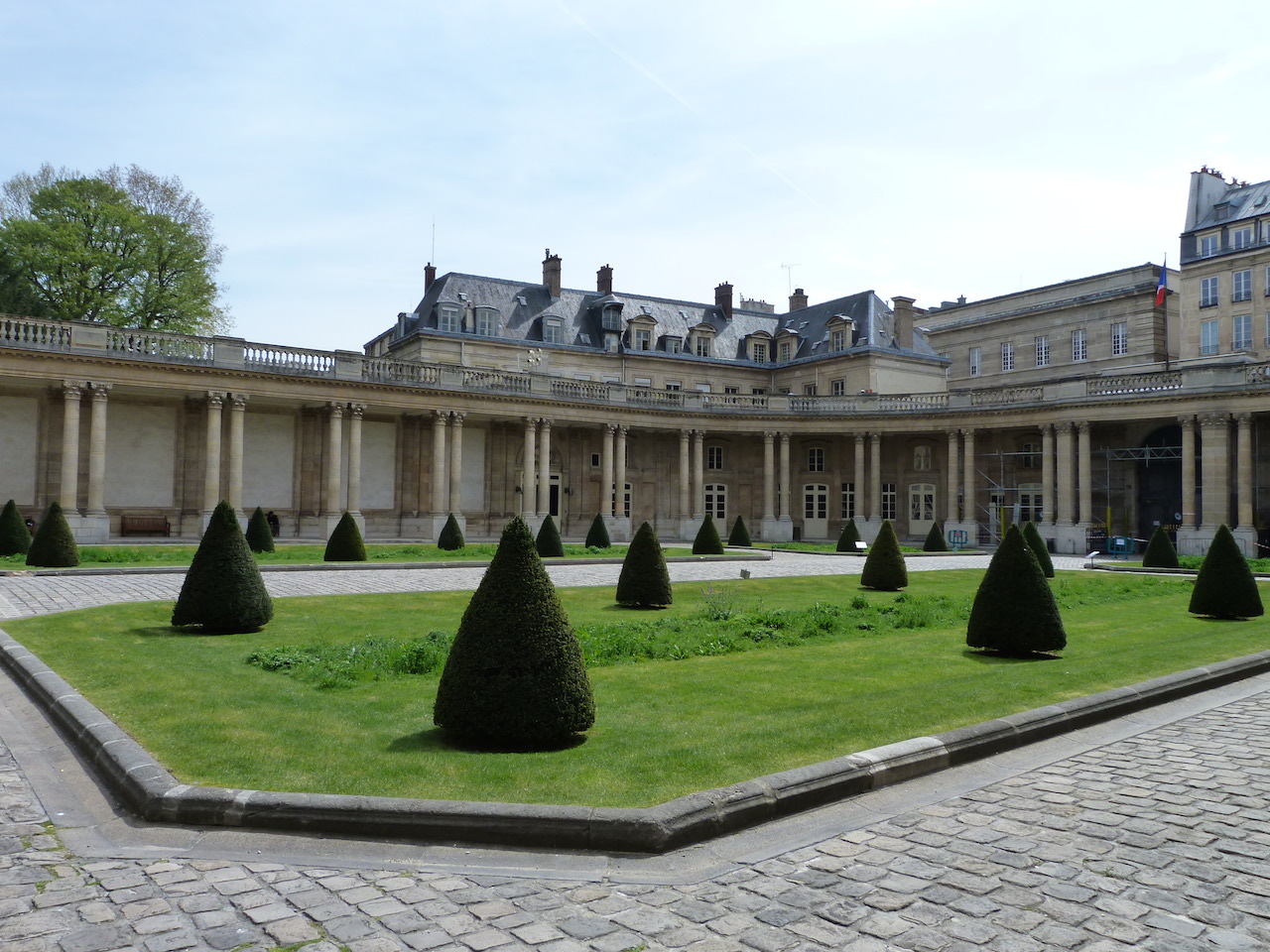
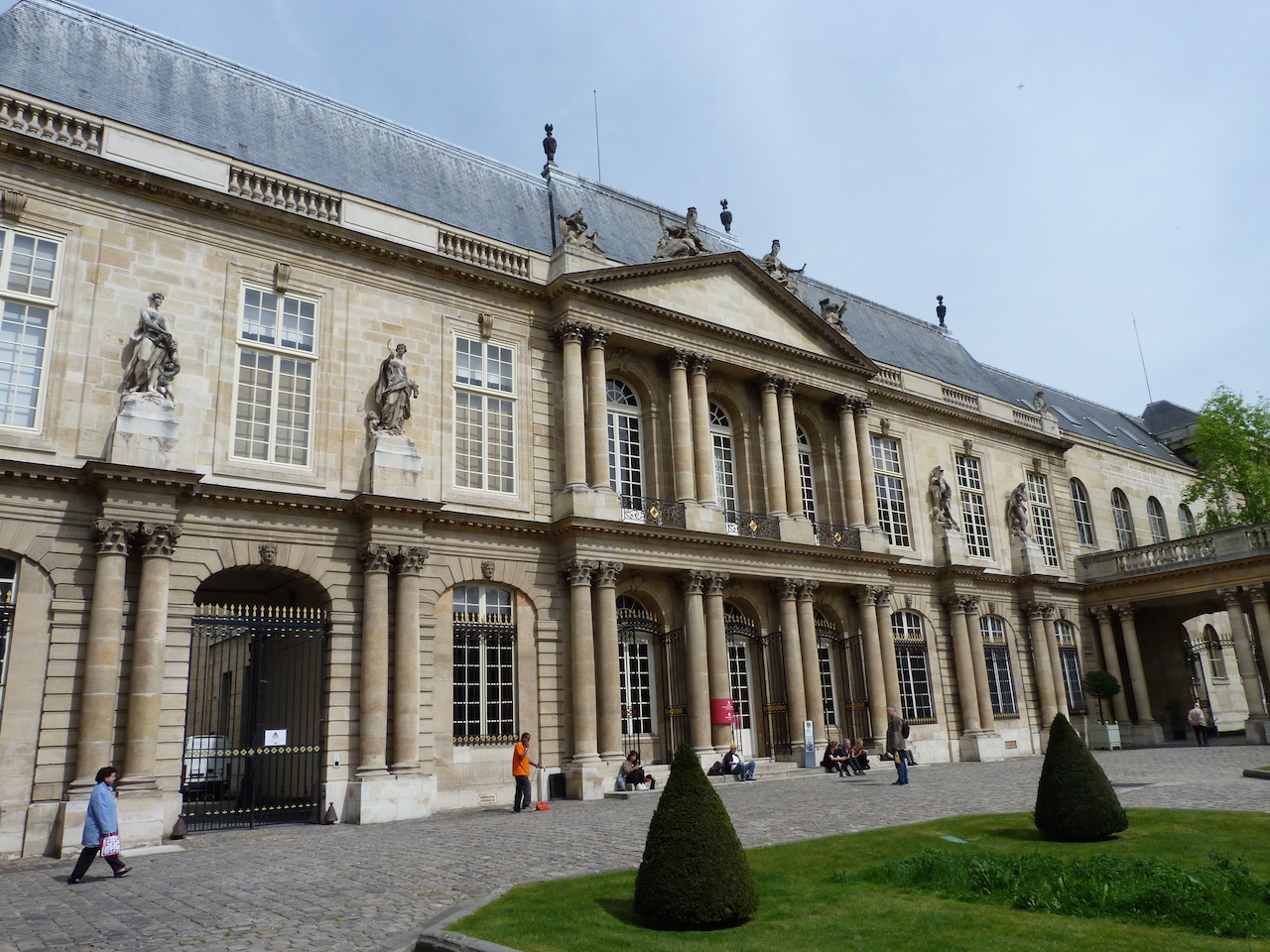
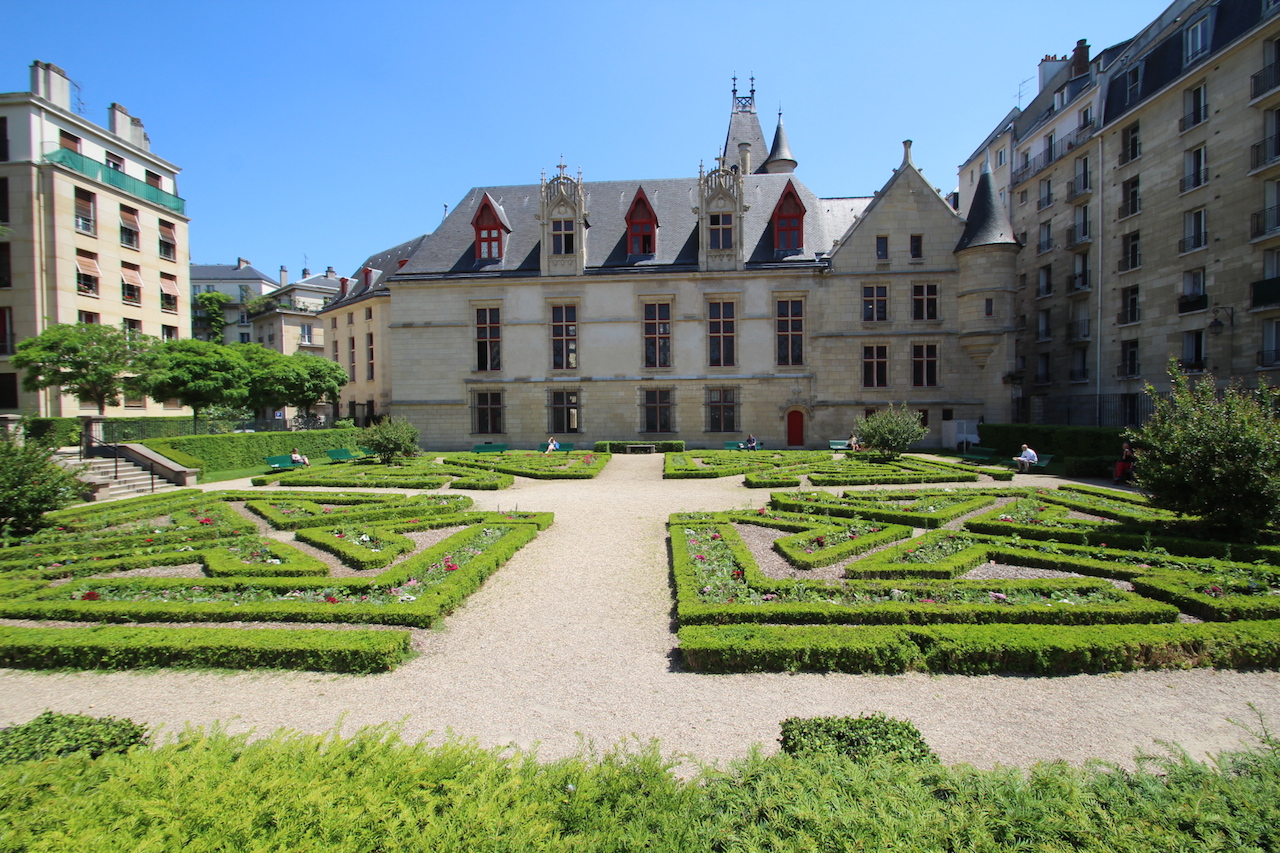
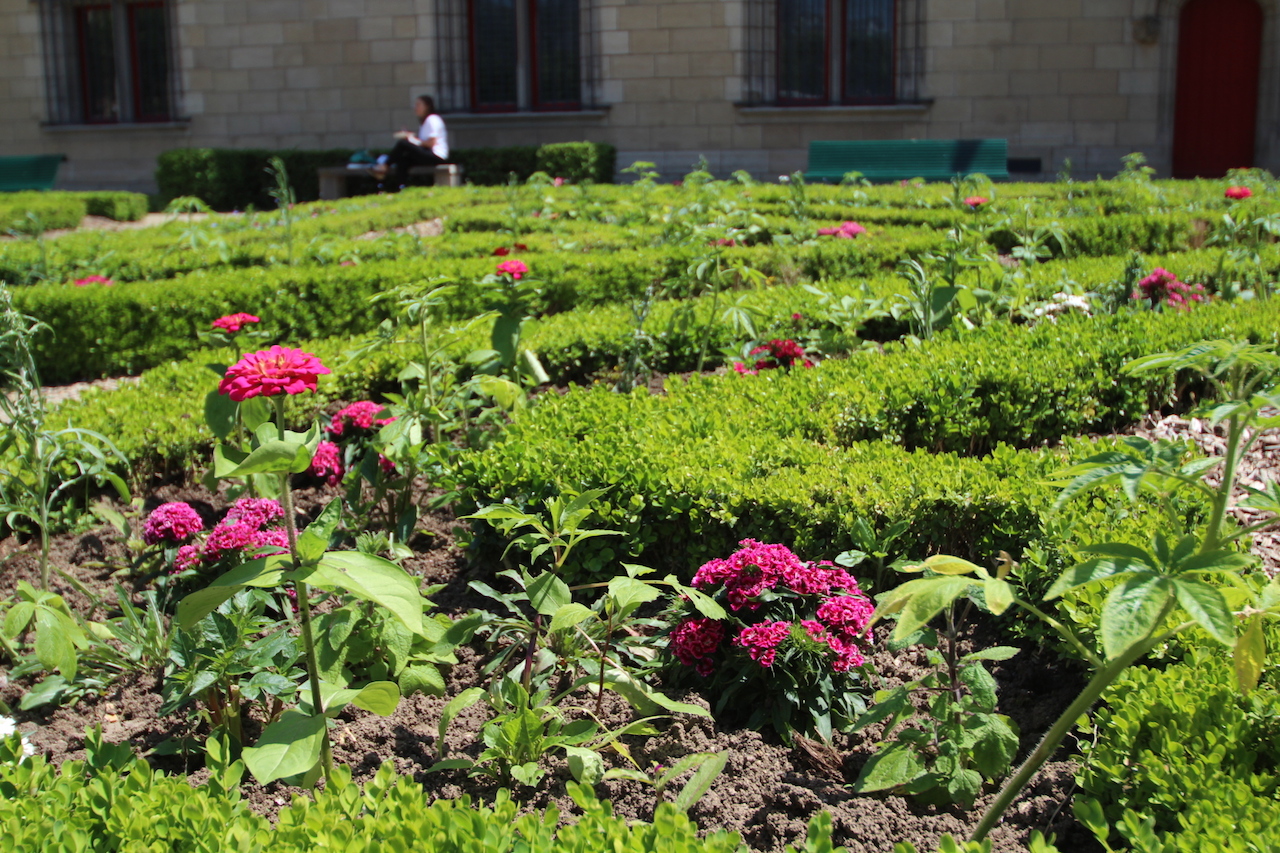
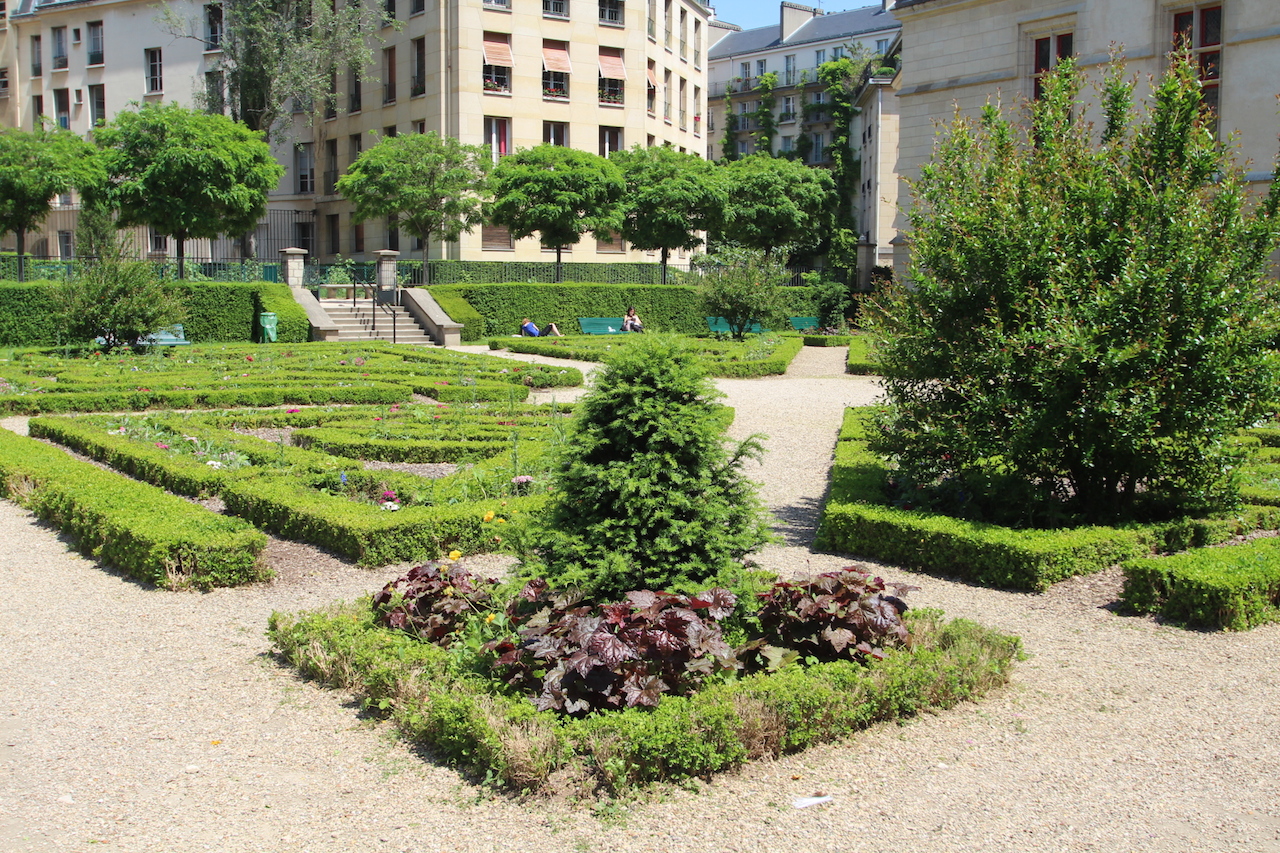
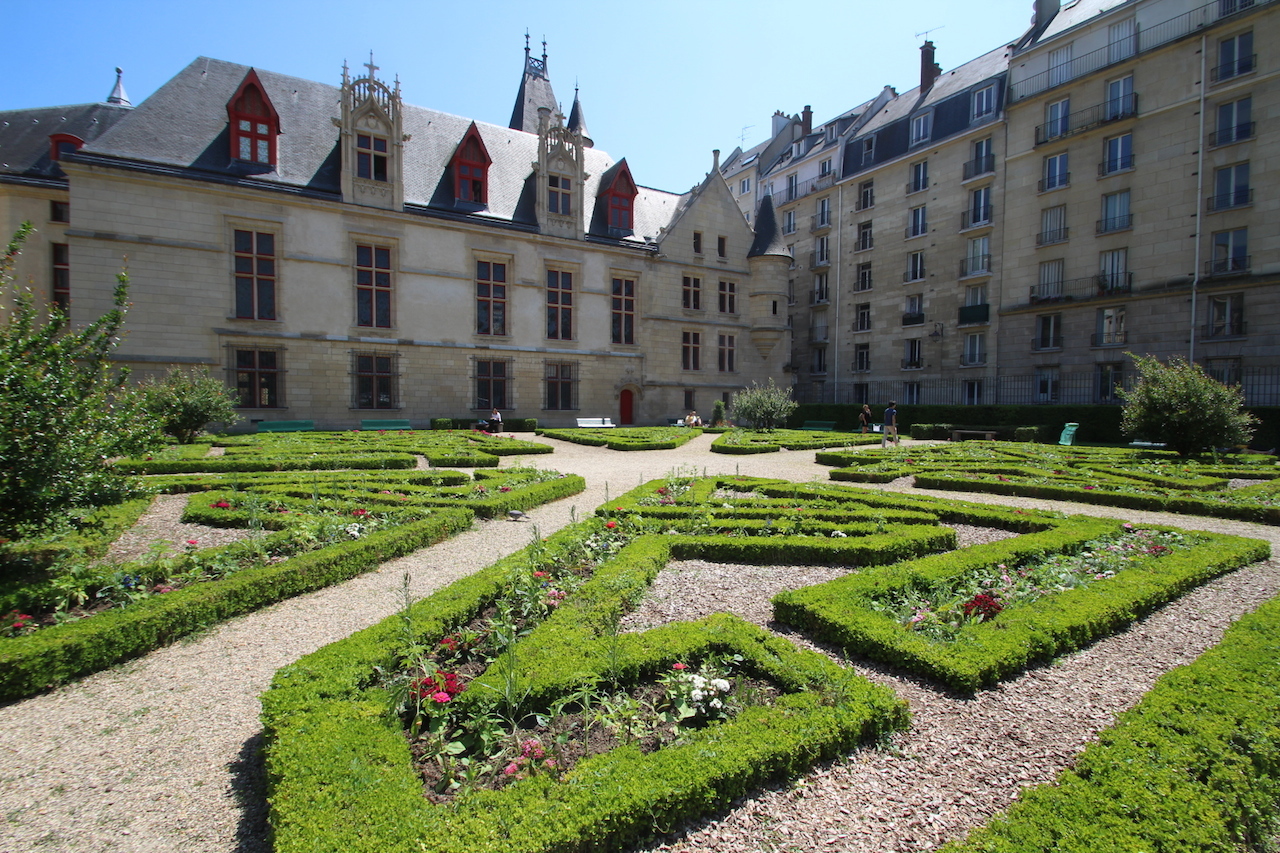
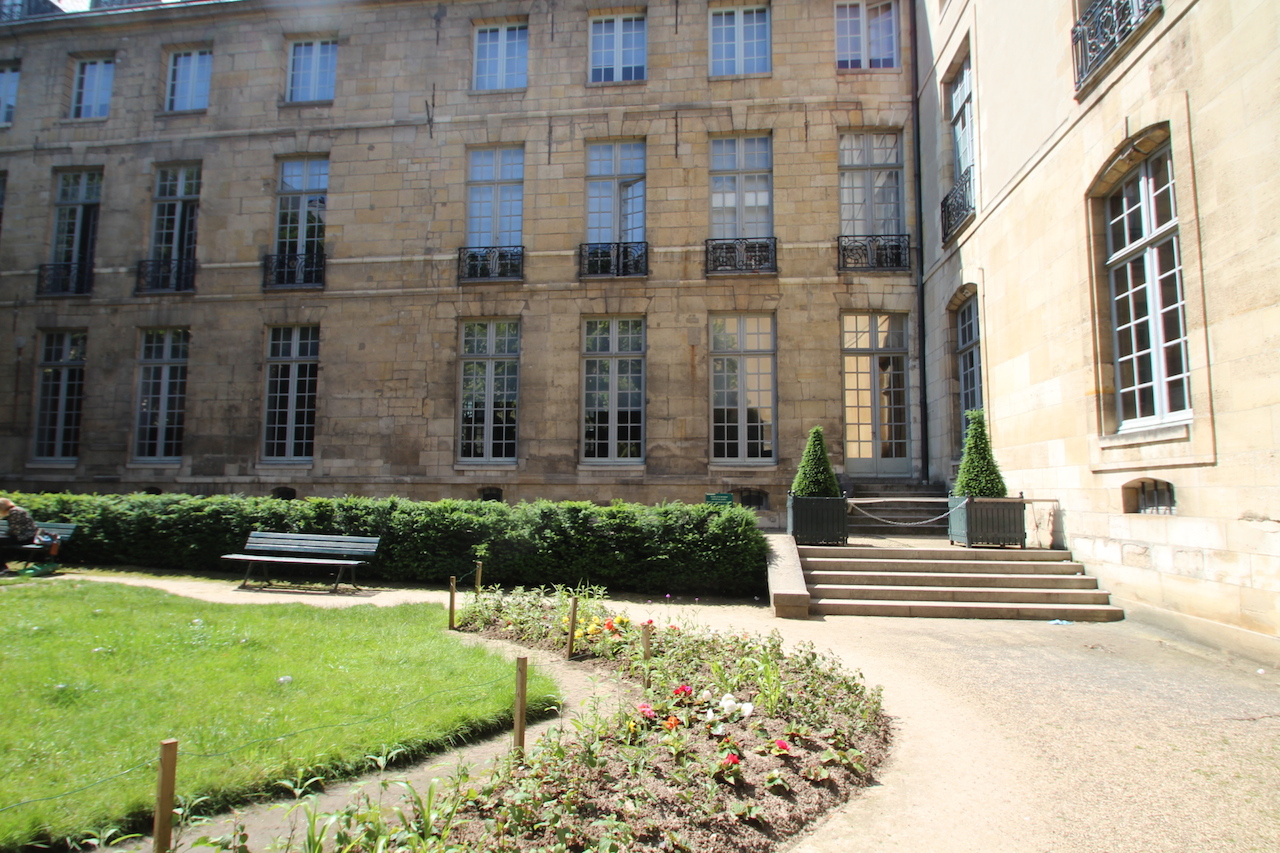
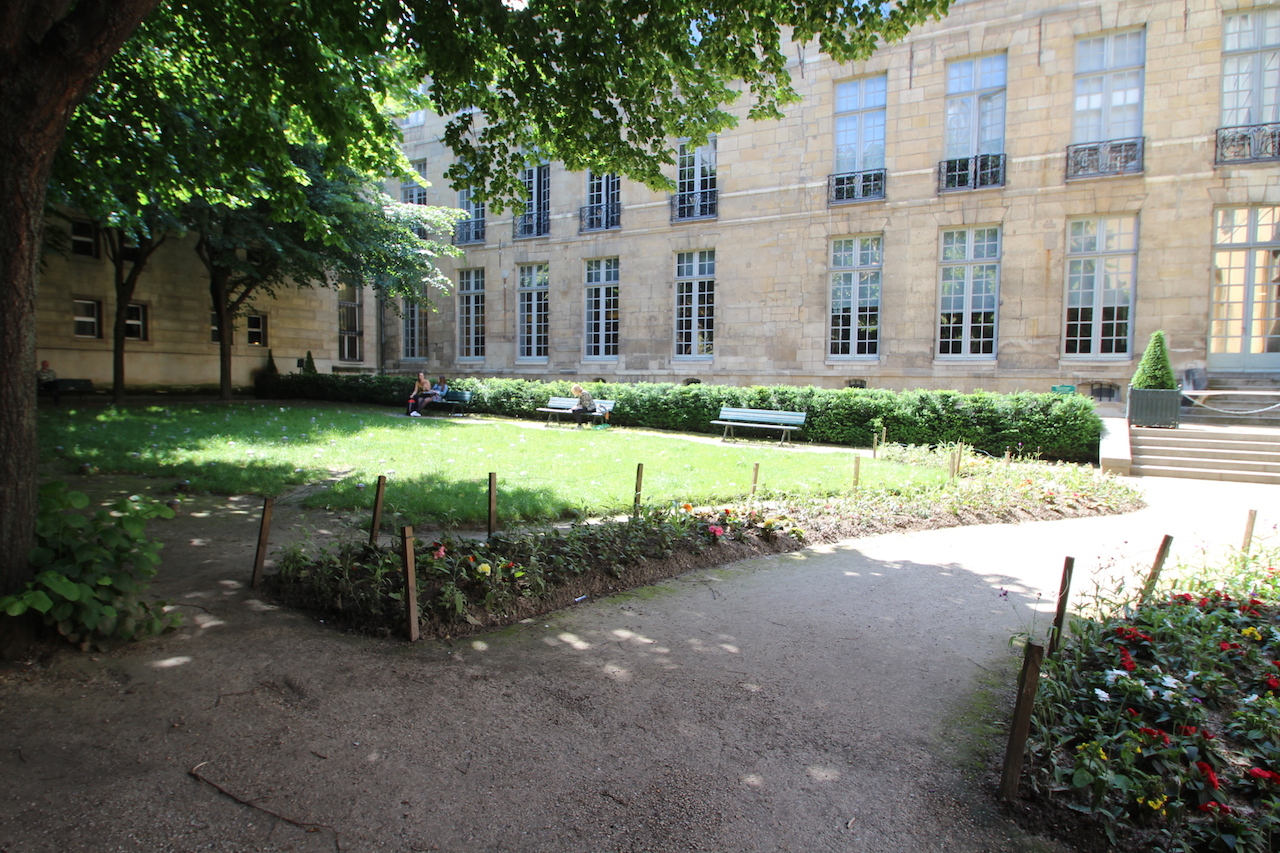
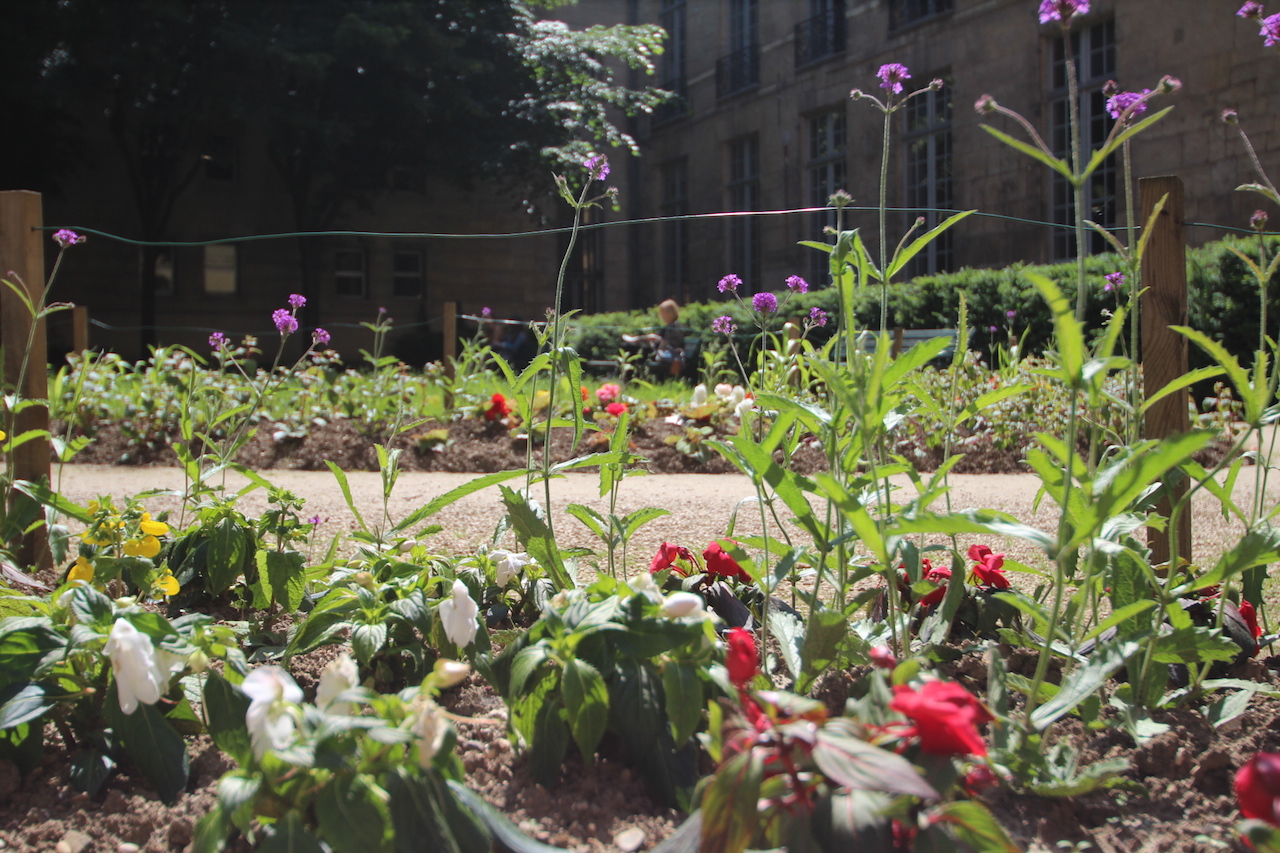
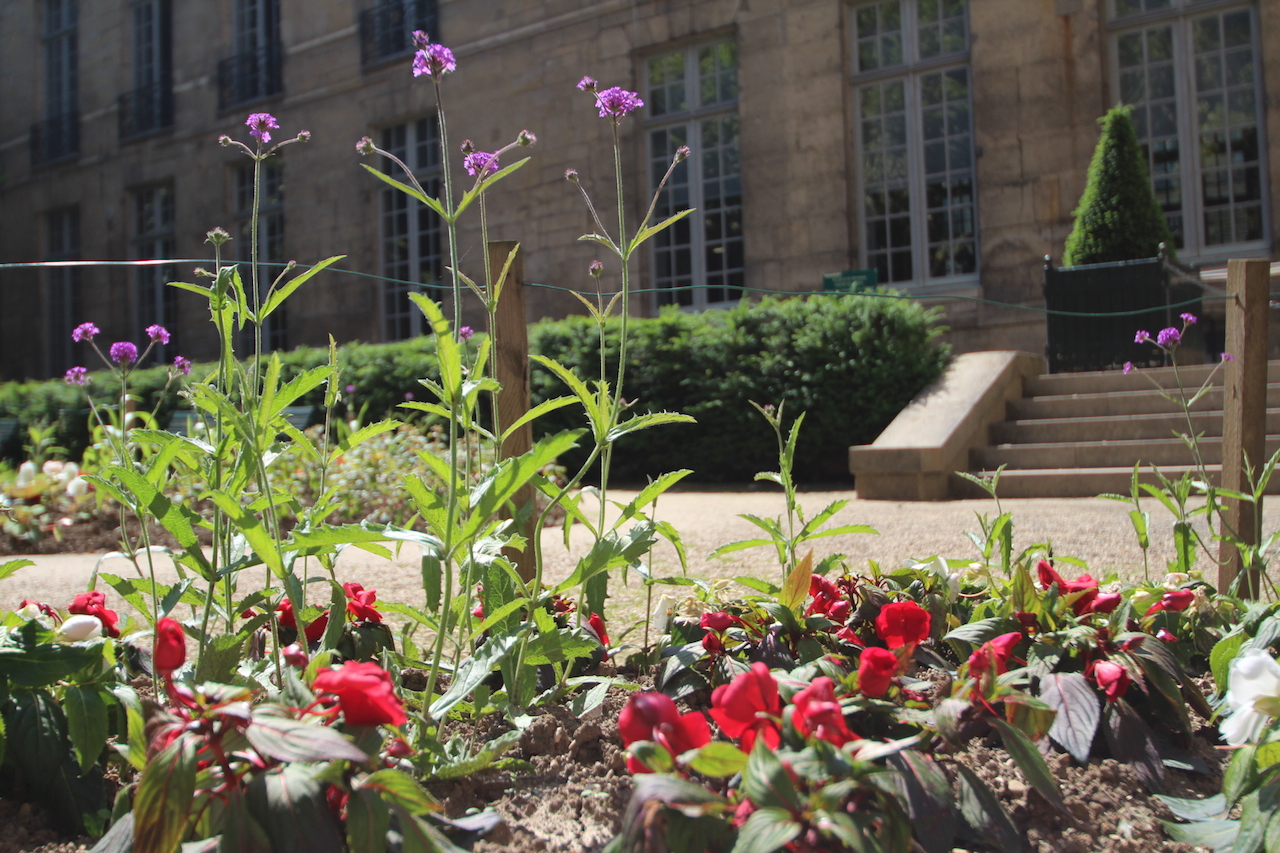
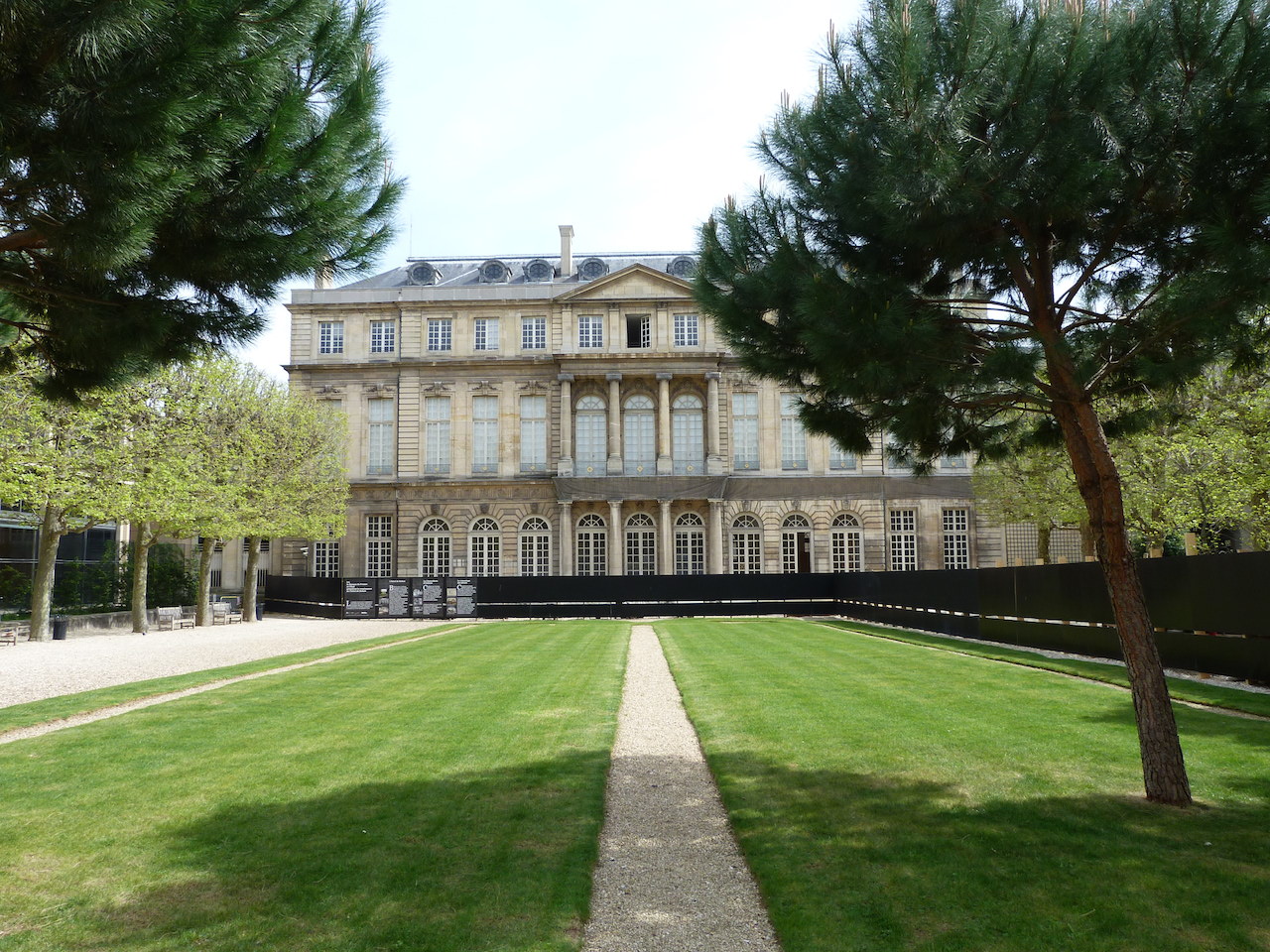
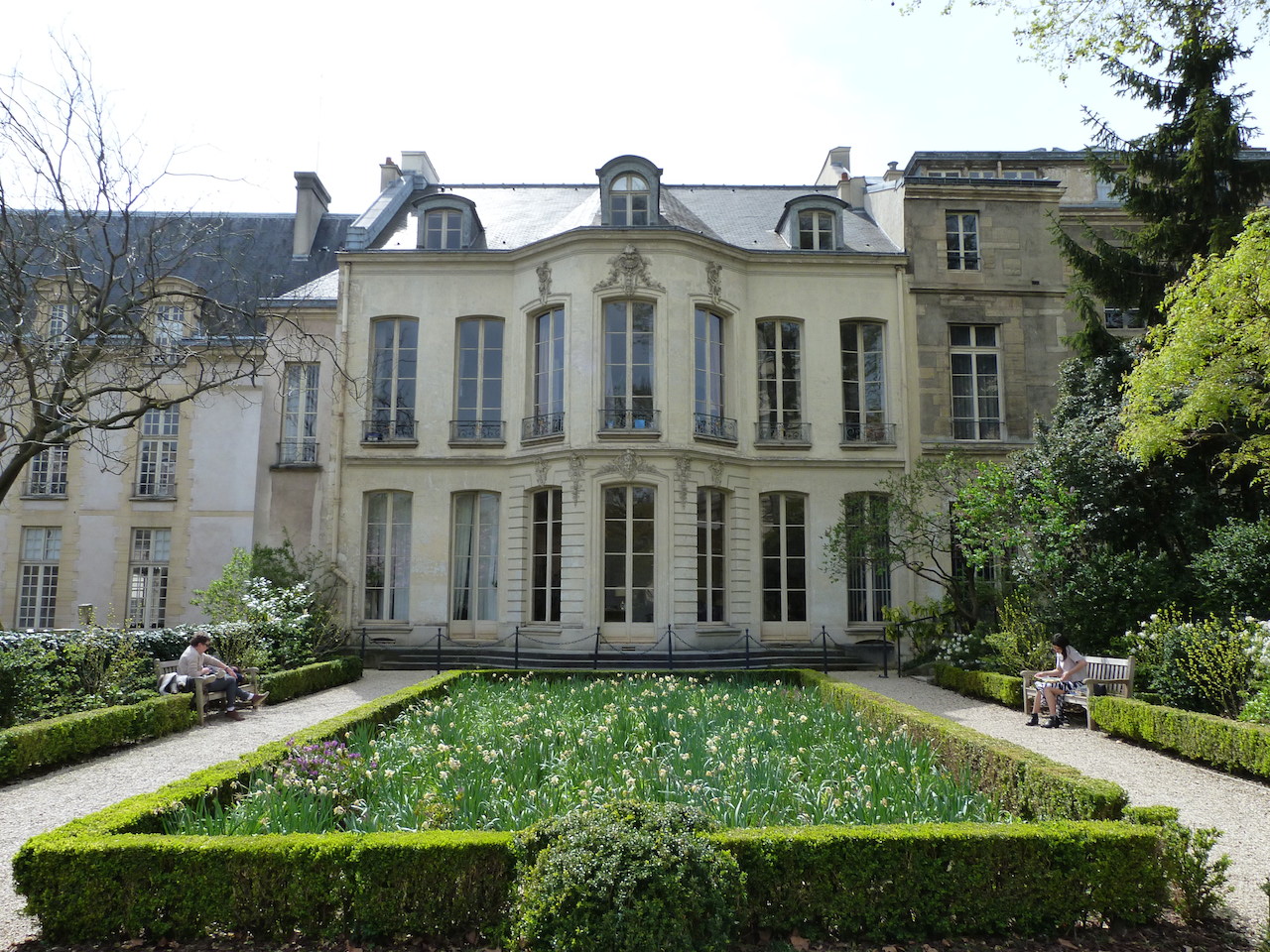
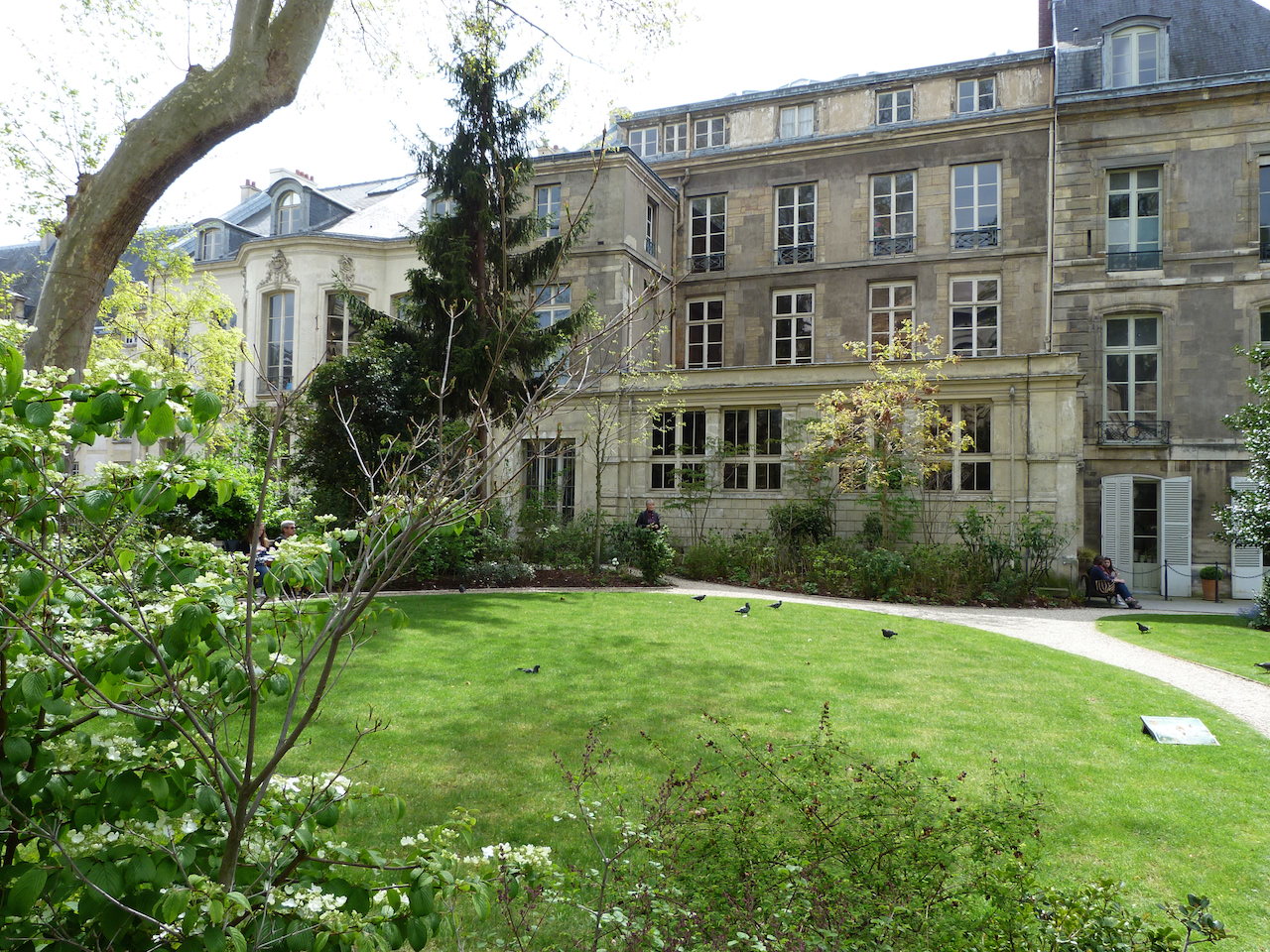
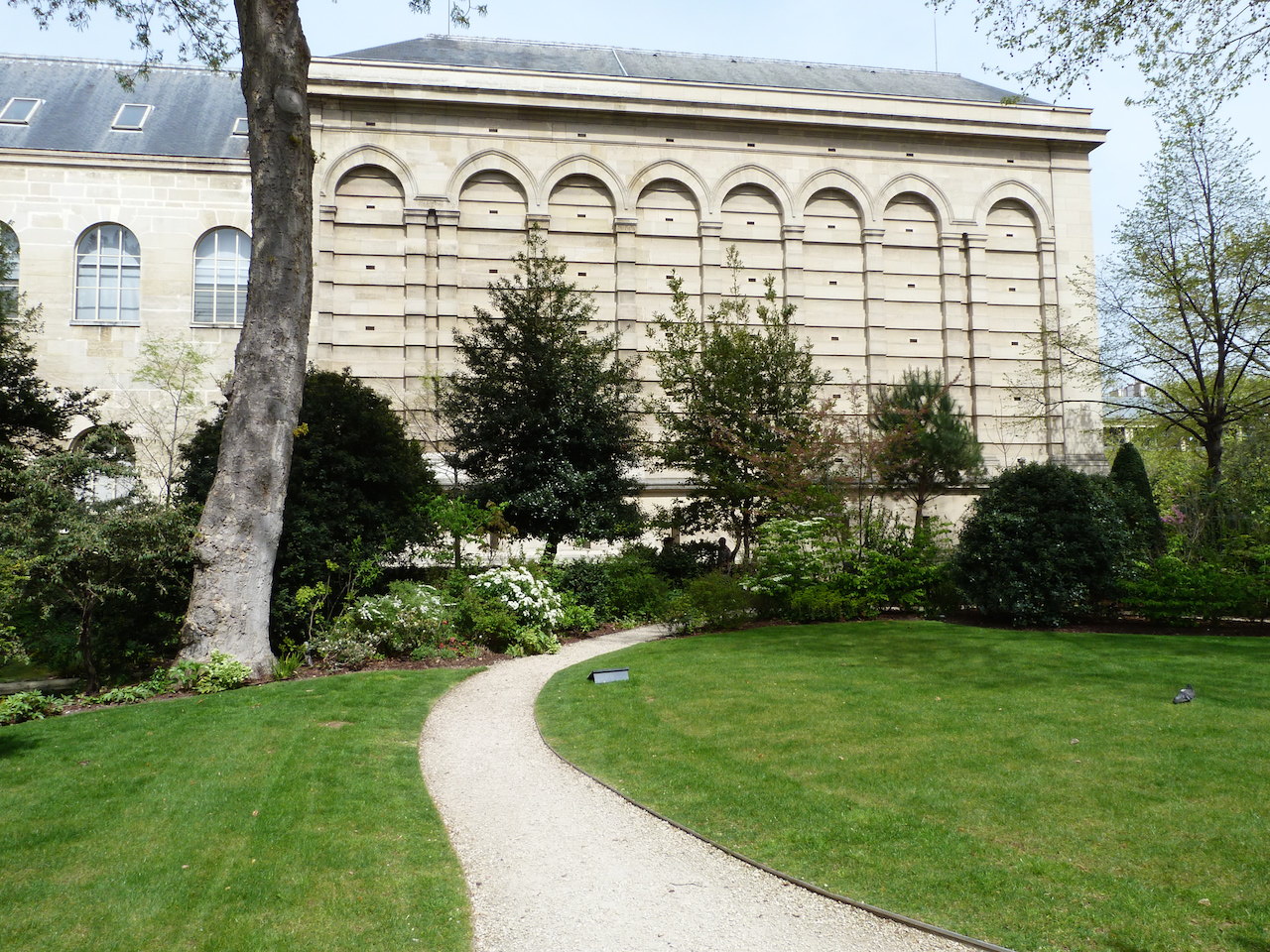
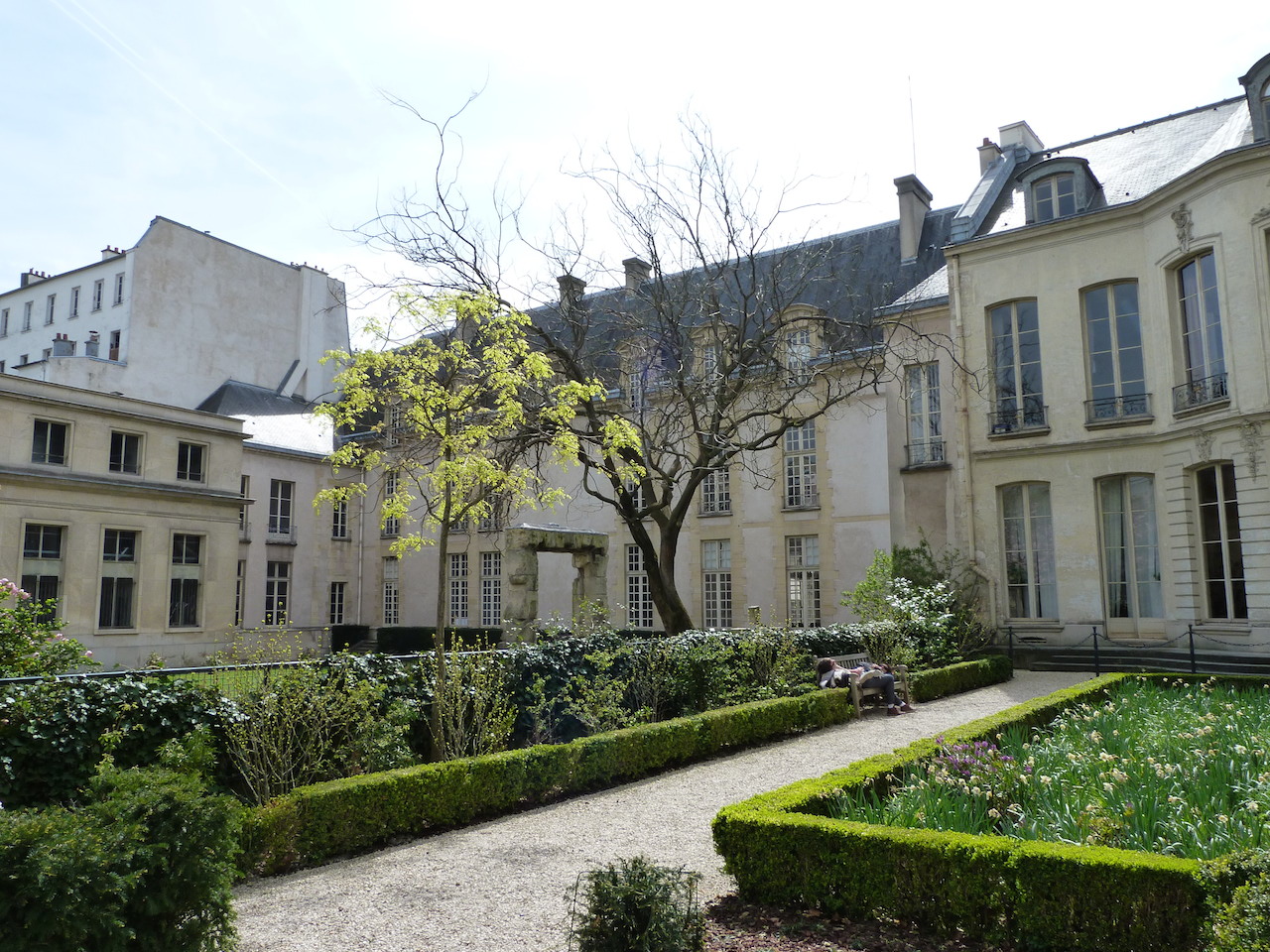
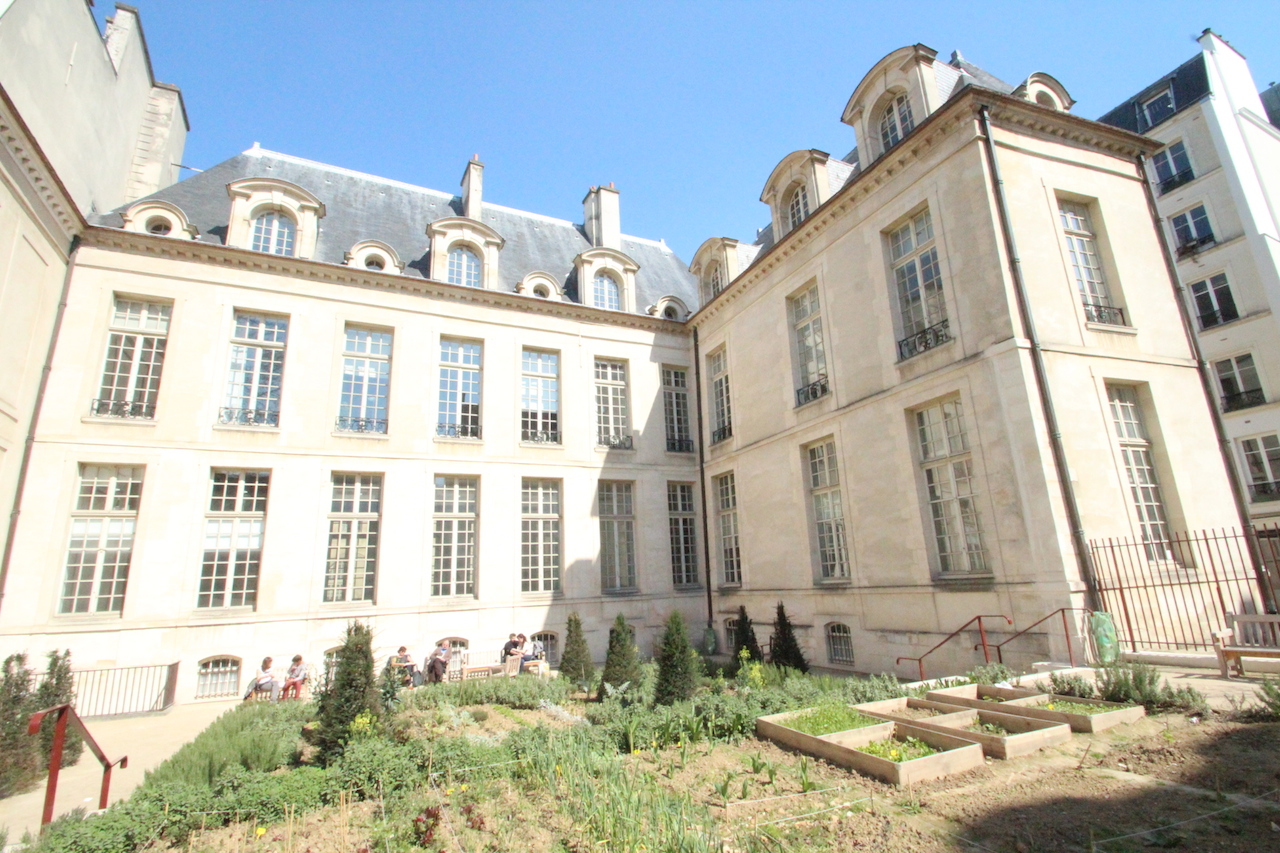
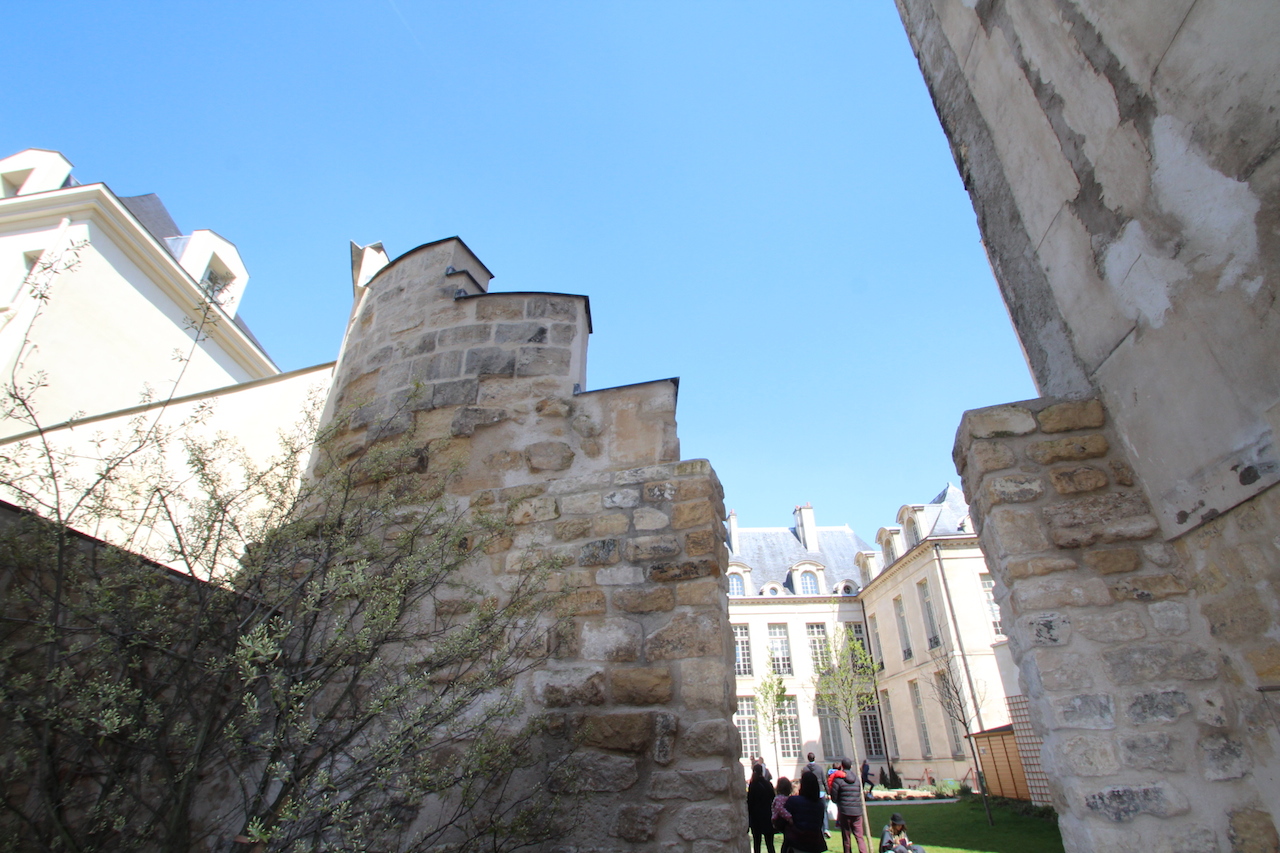
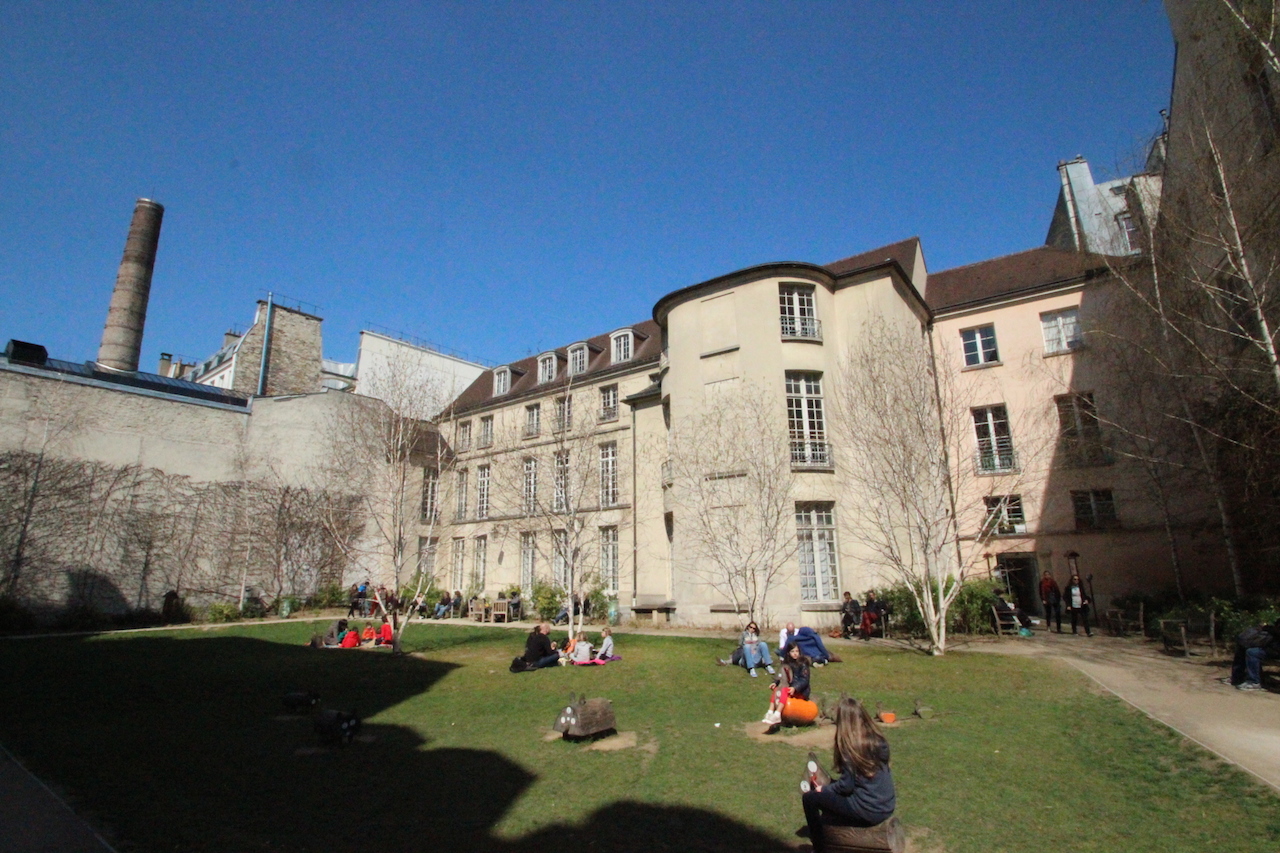
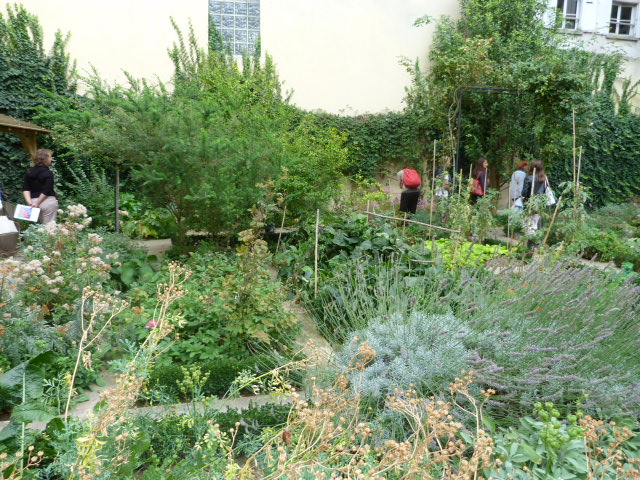
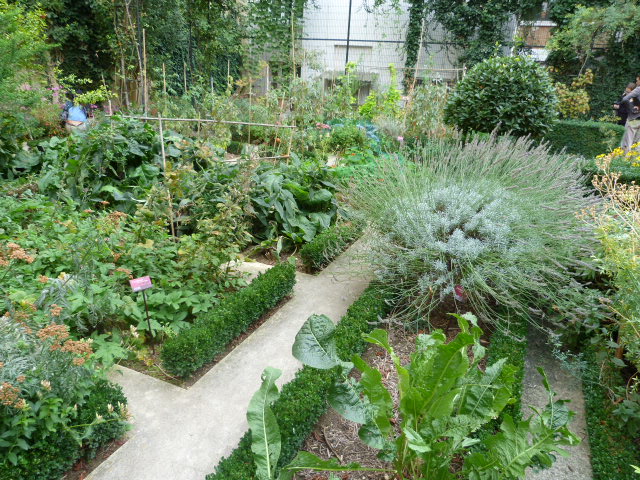
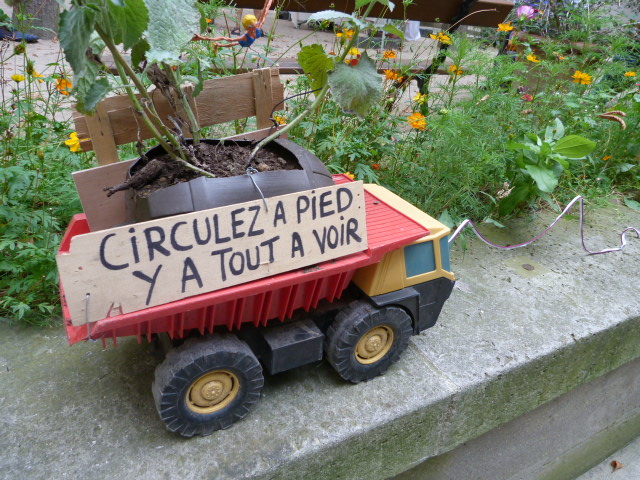
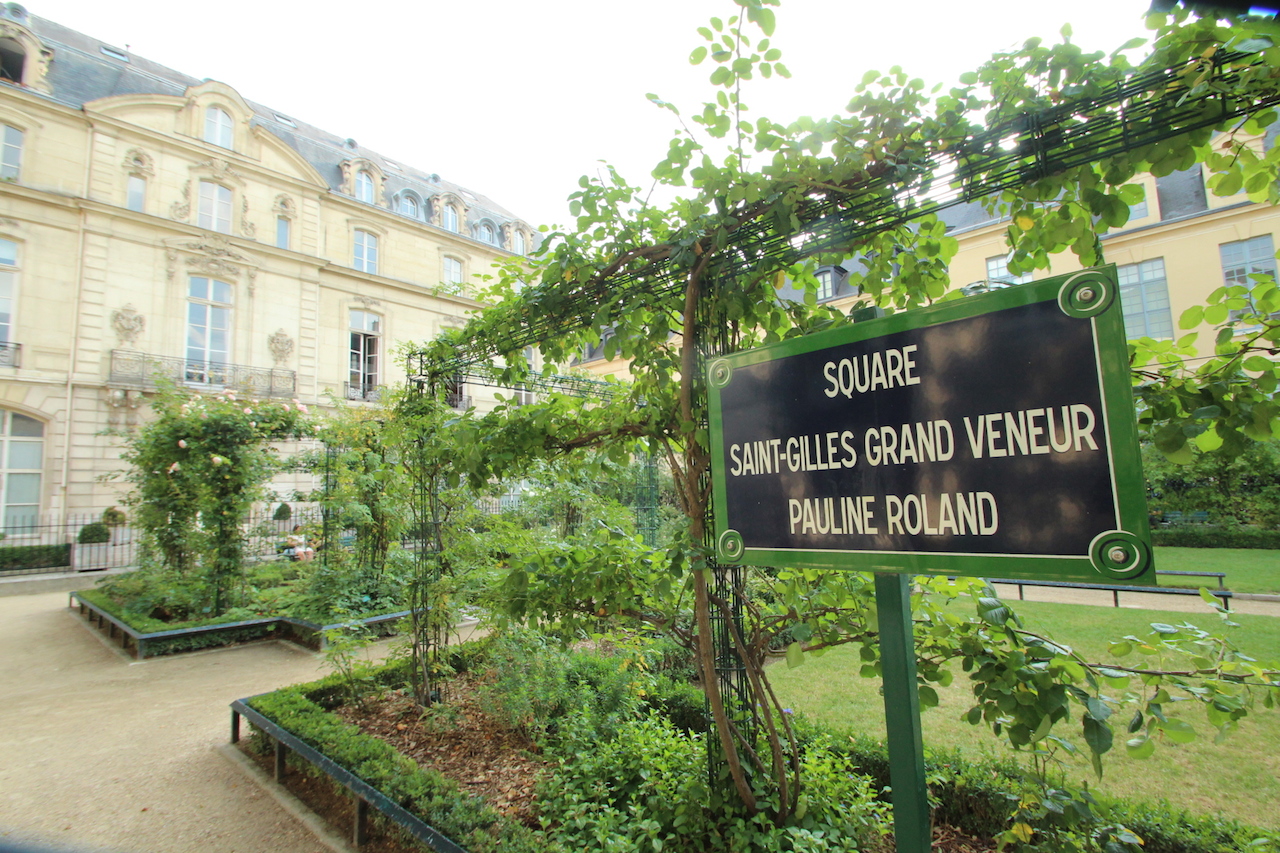
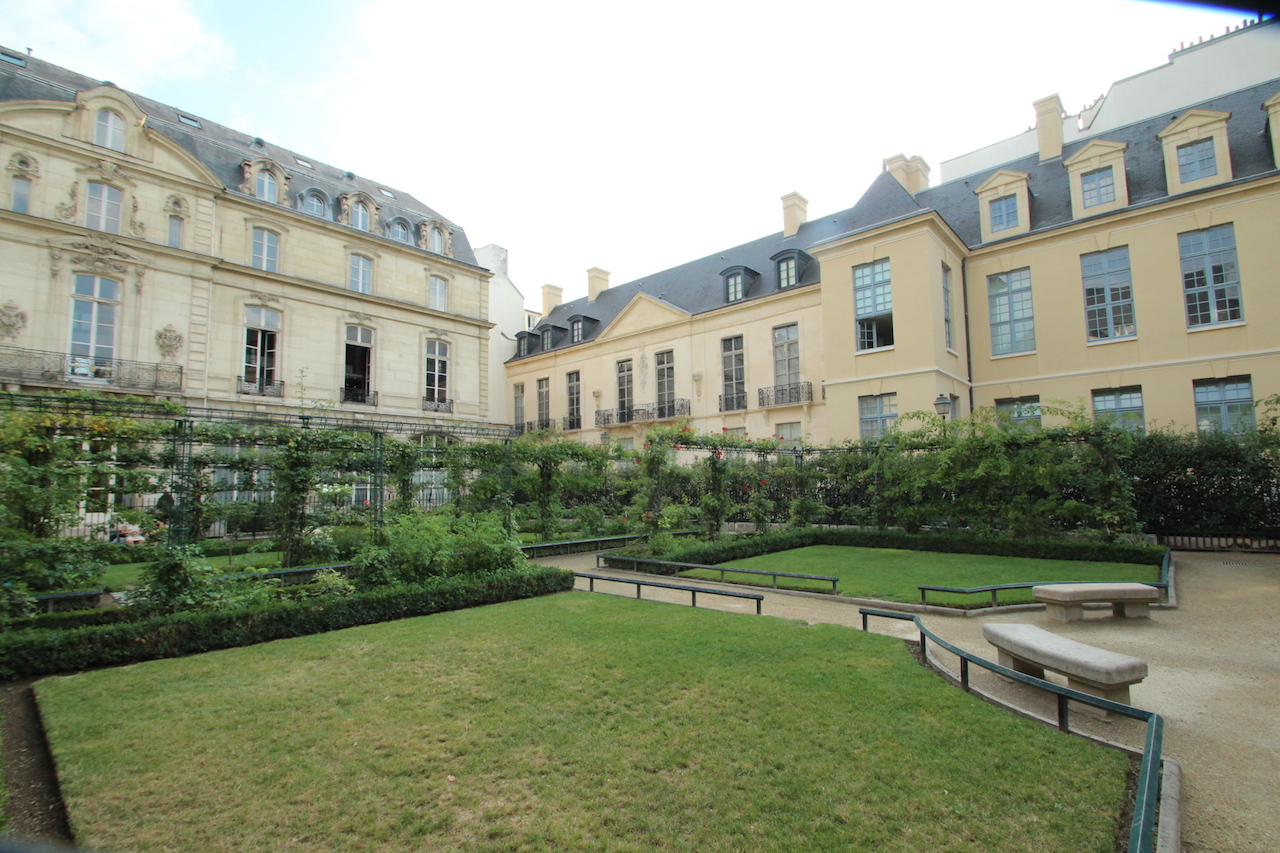
.JPG)
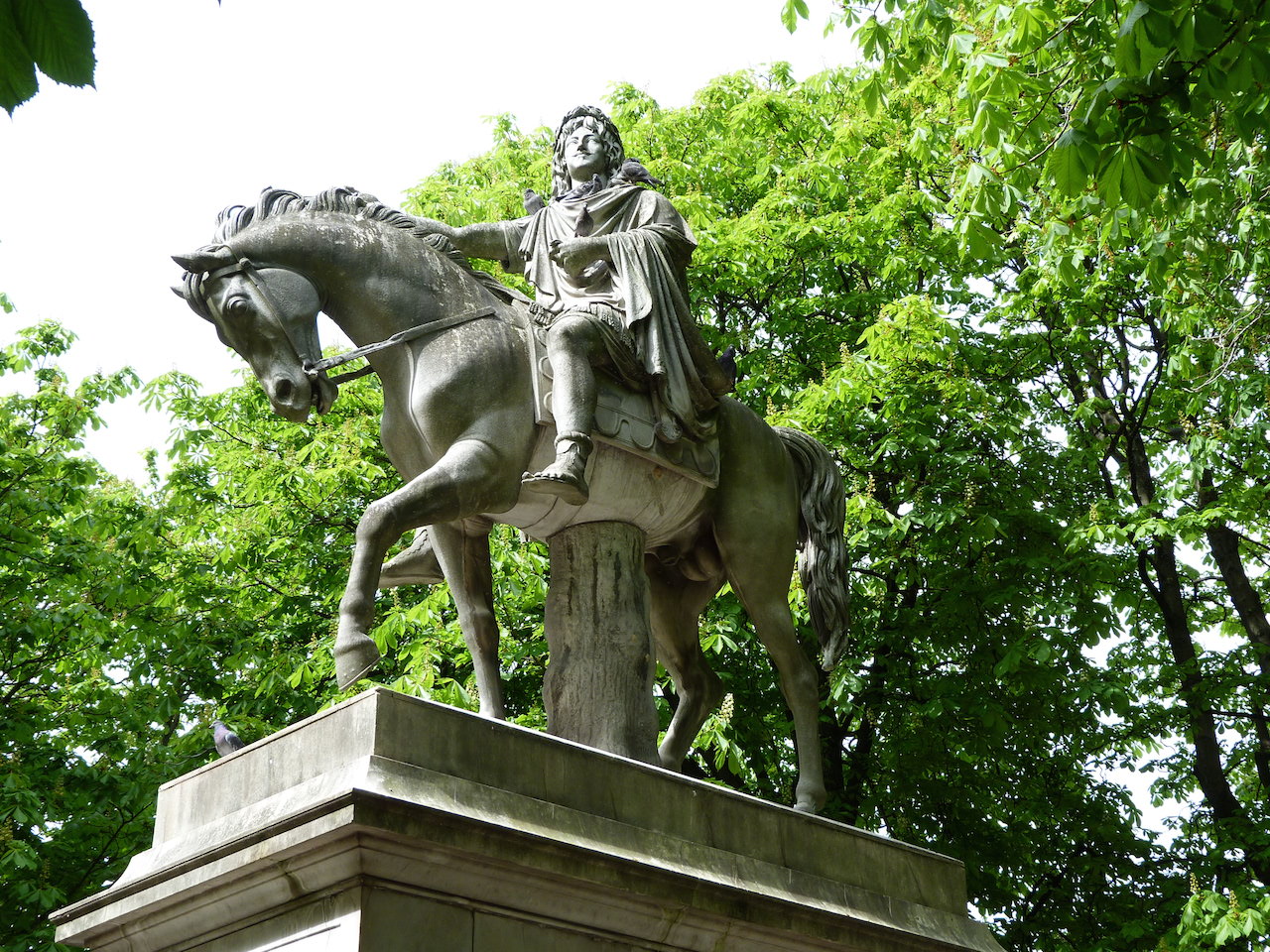
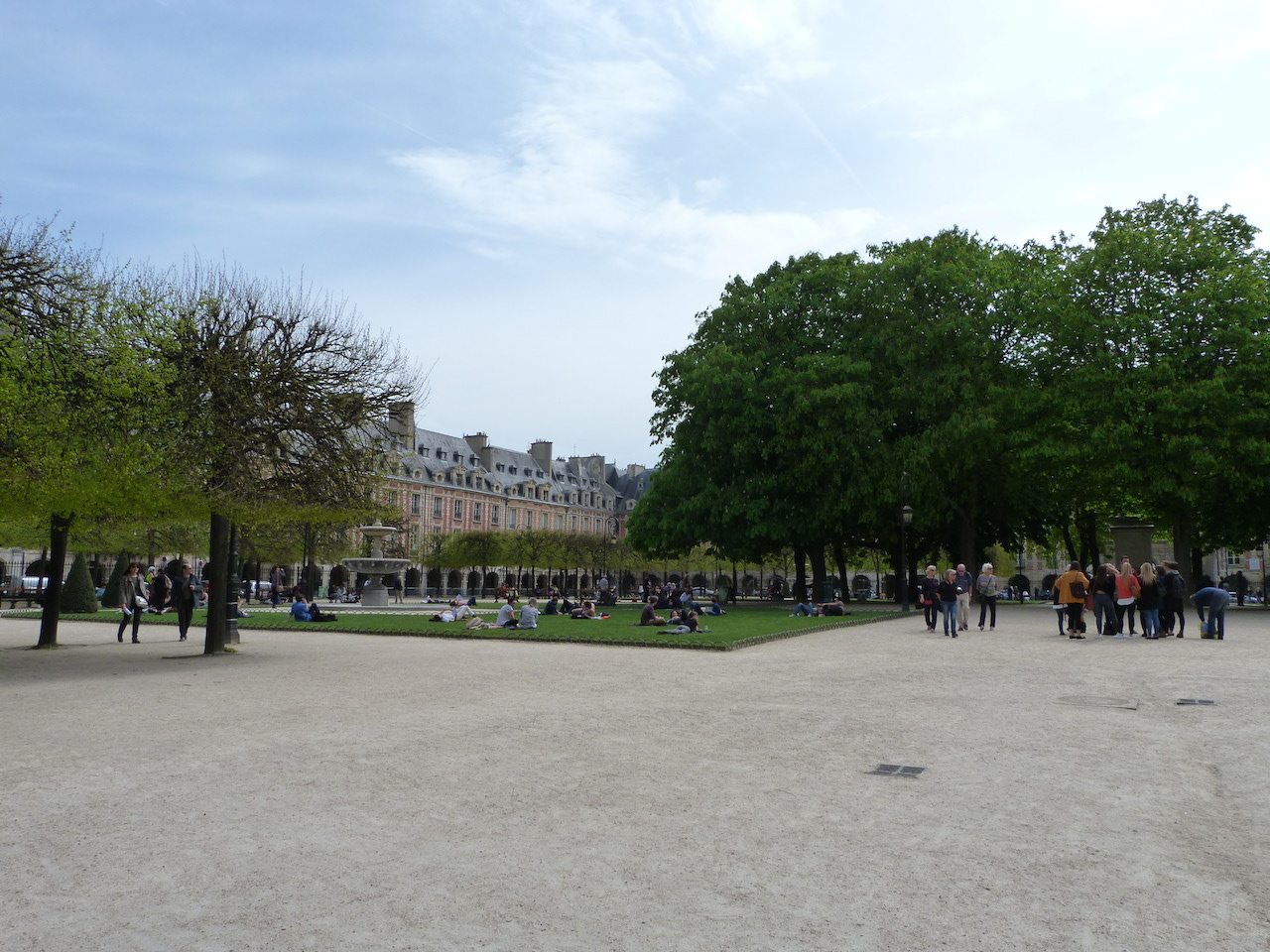
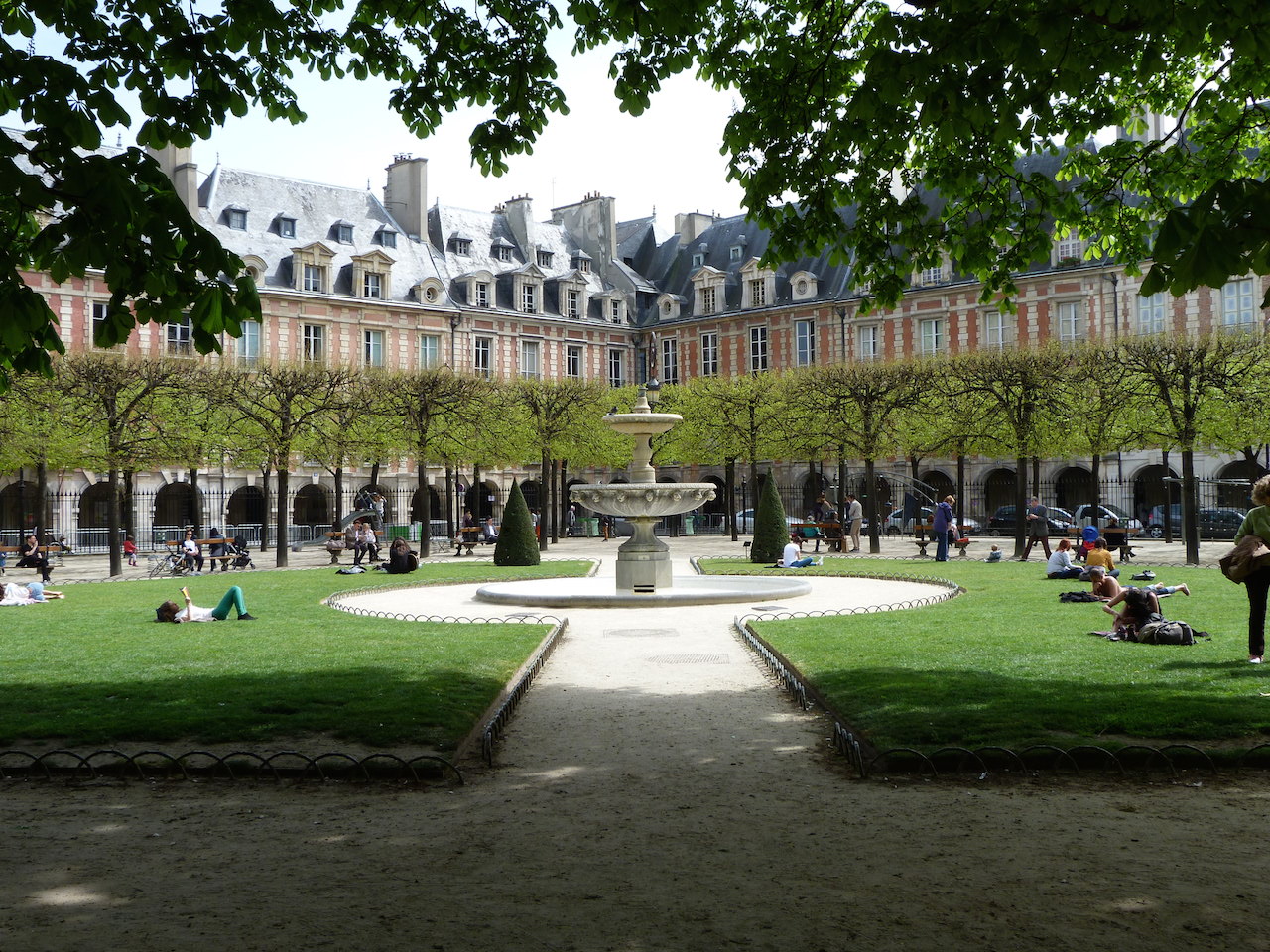
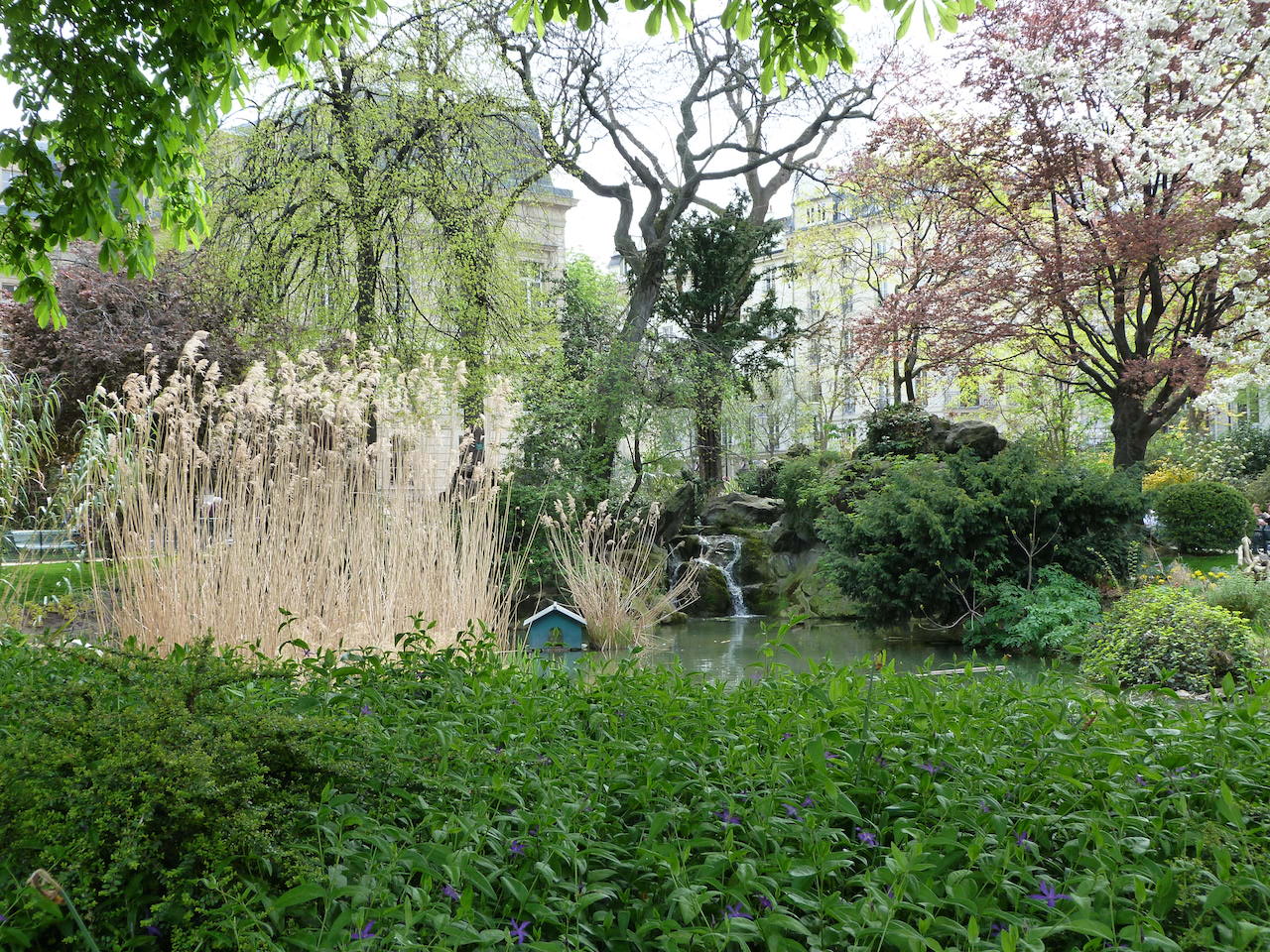
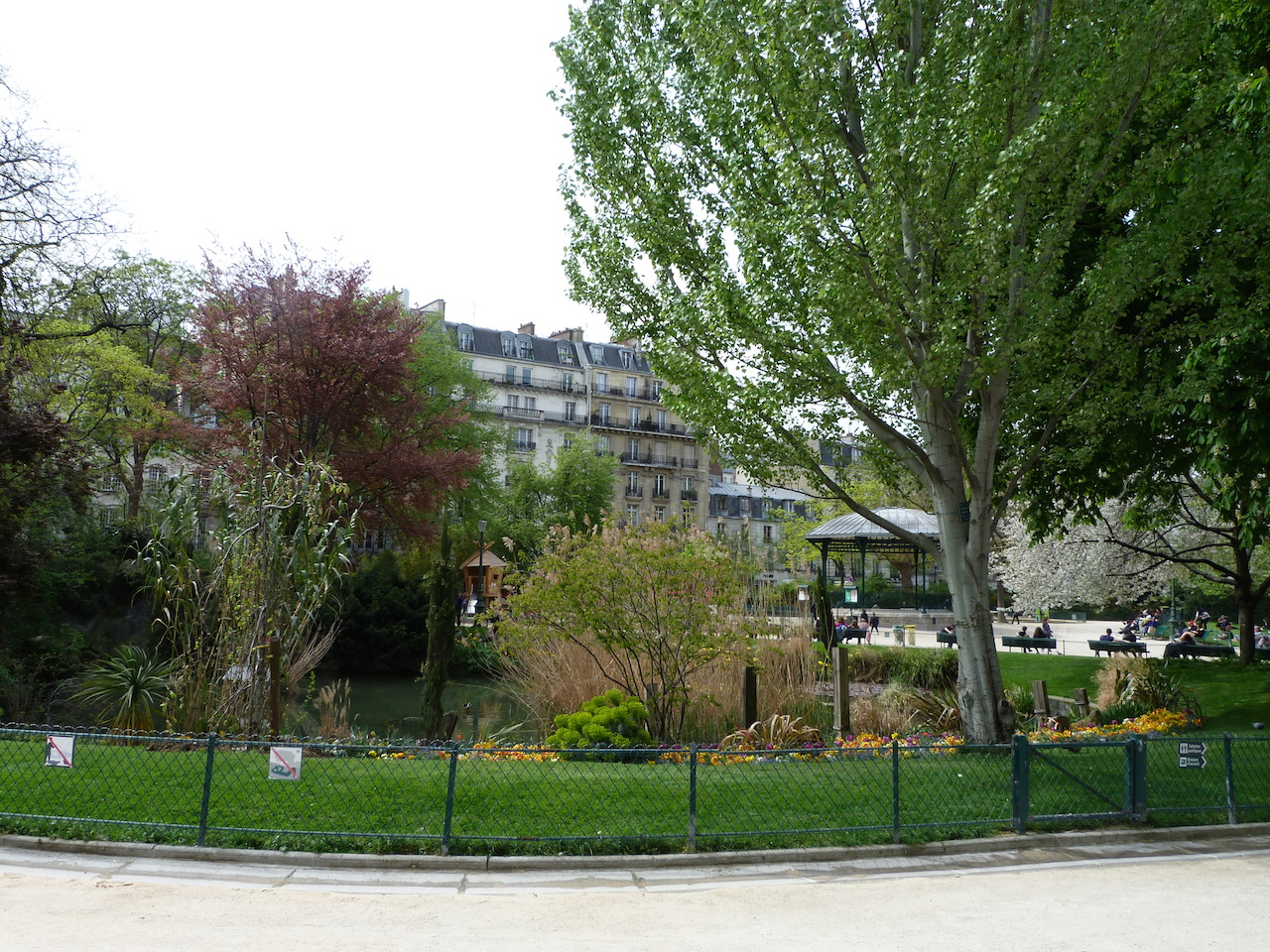
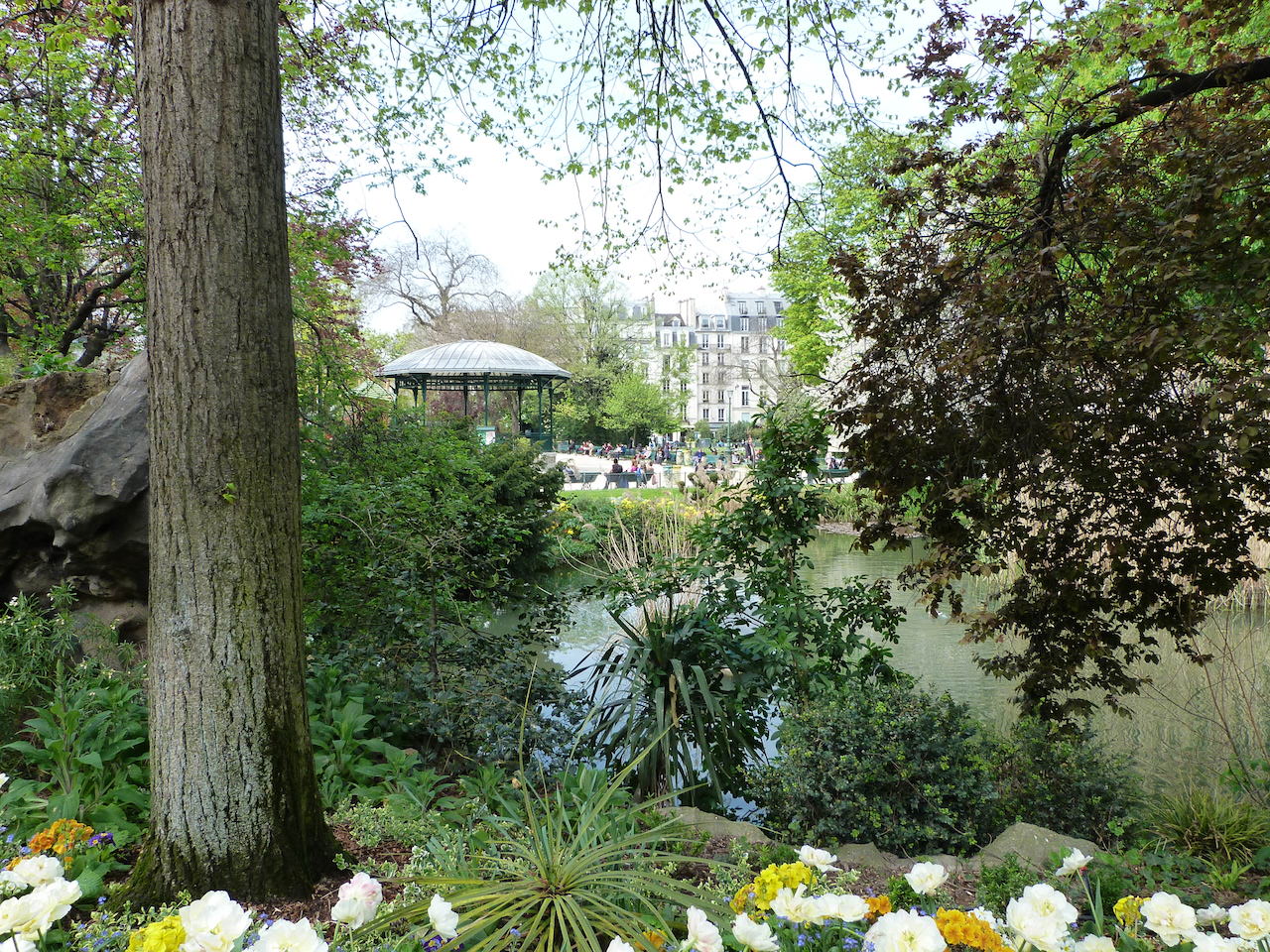
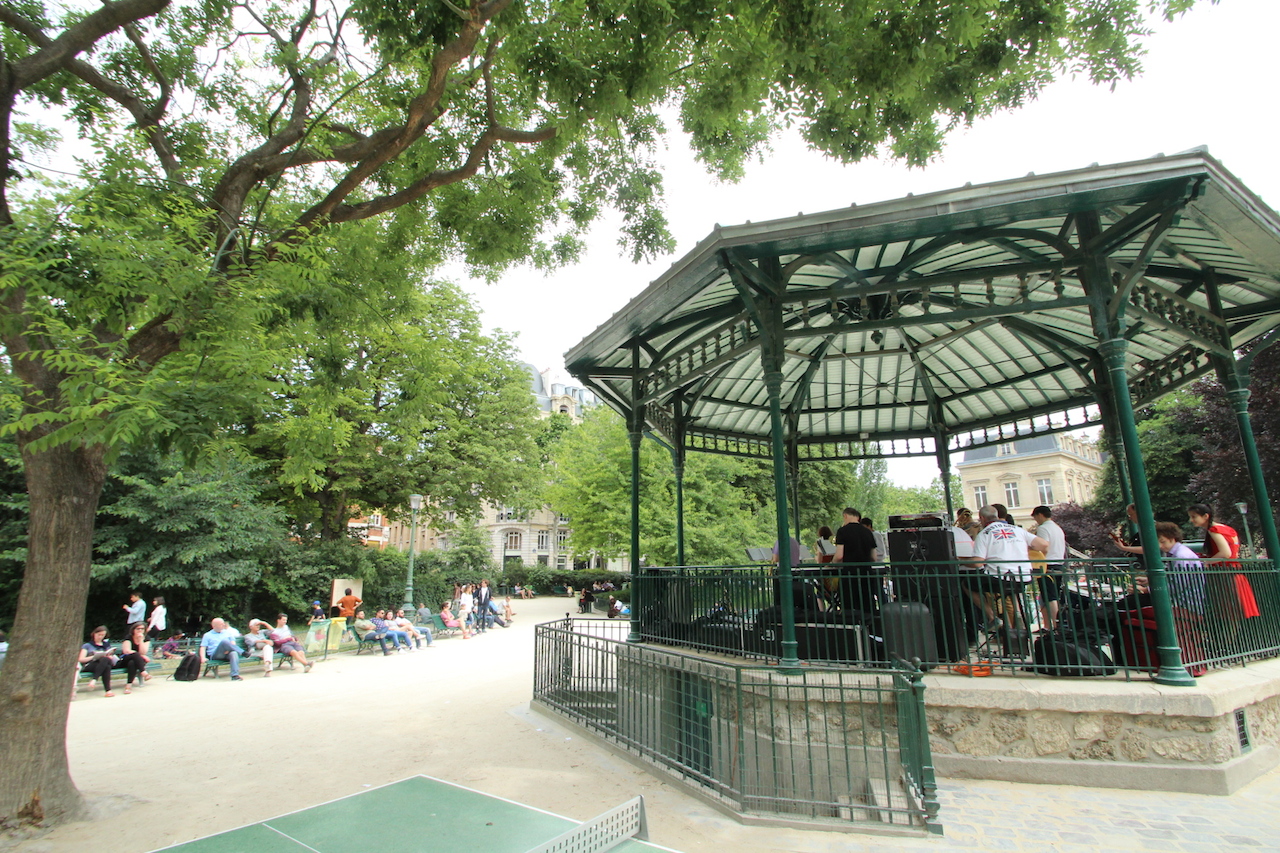
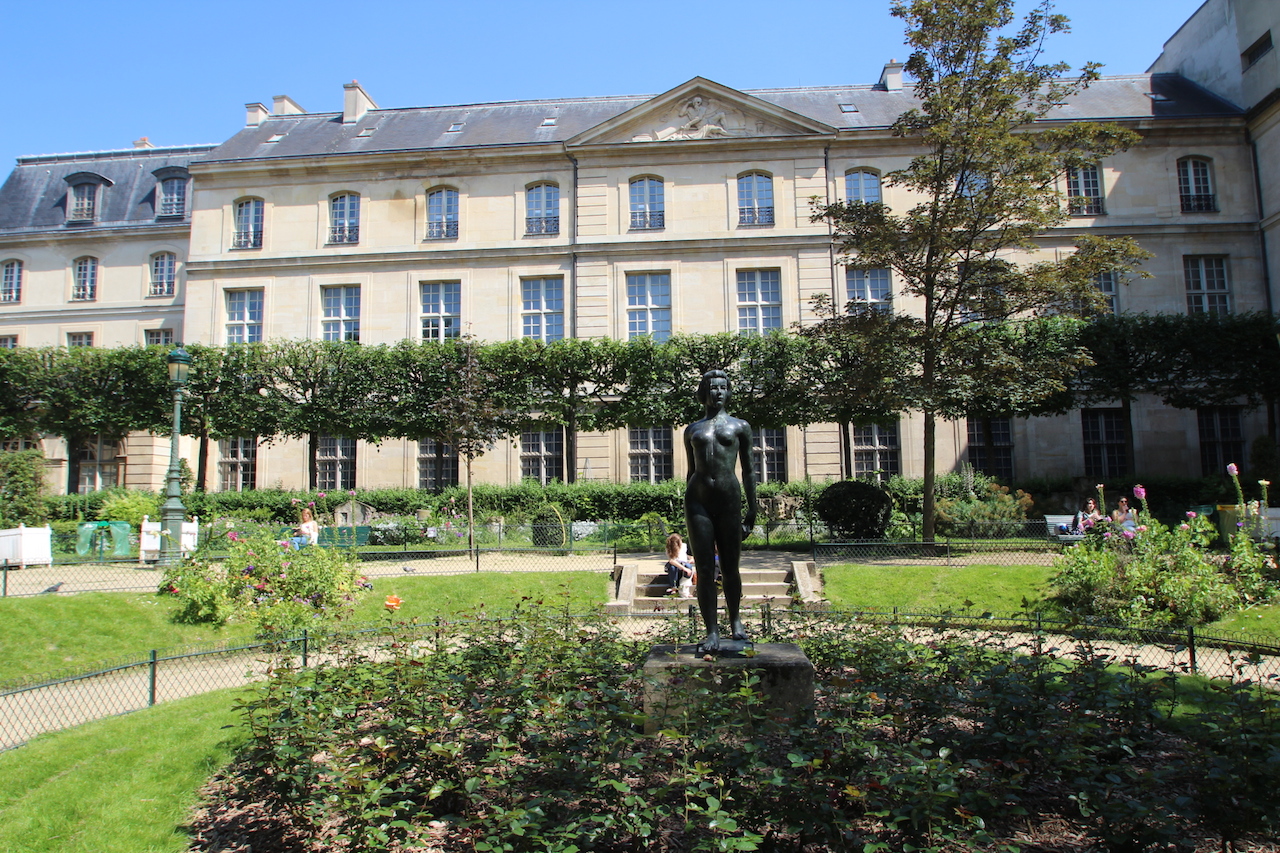
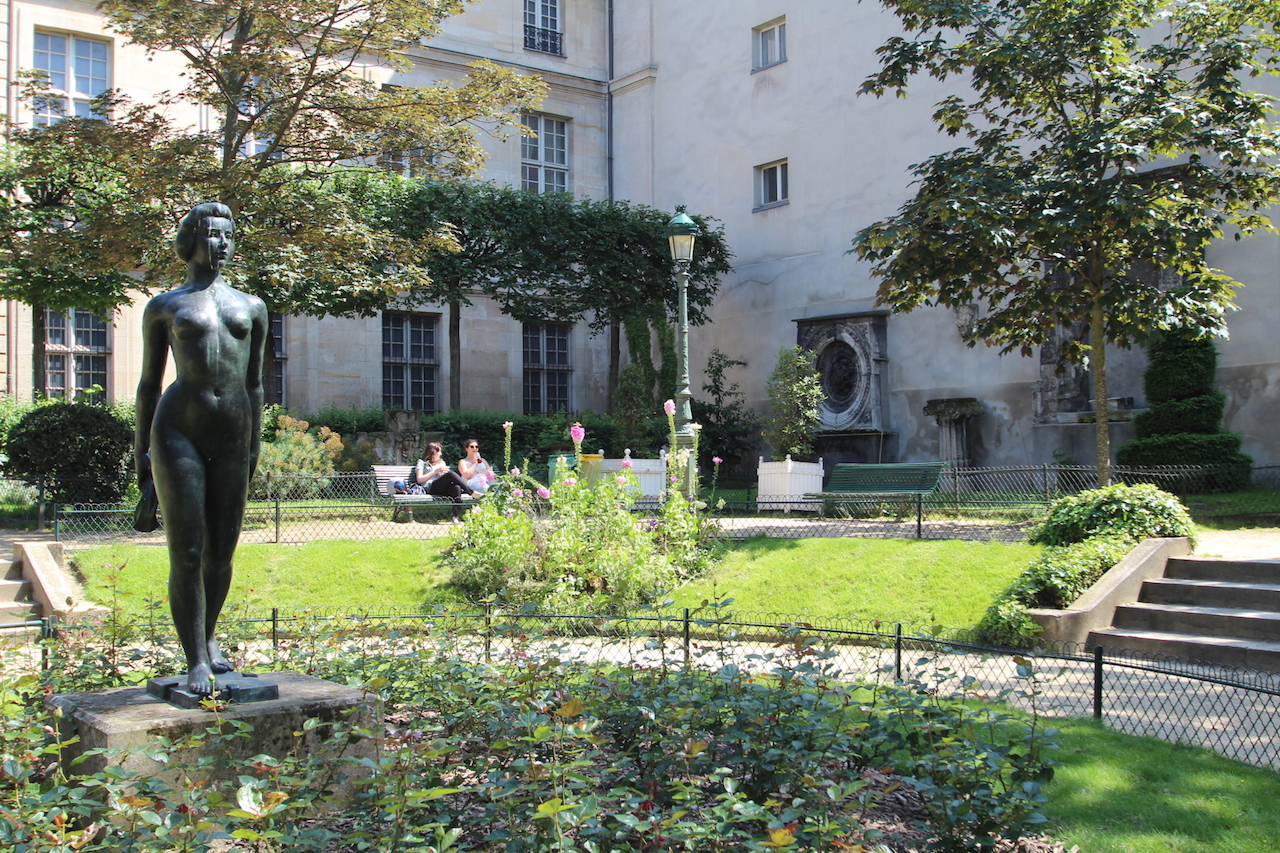
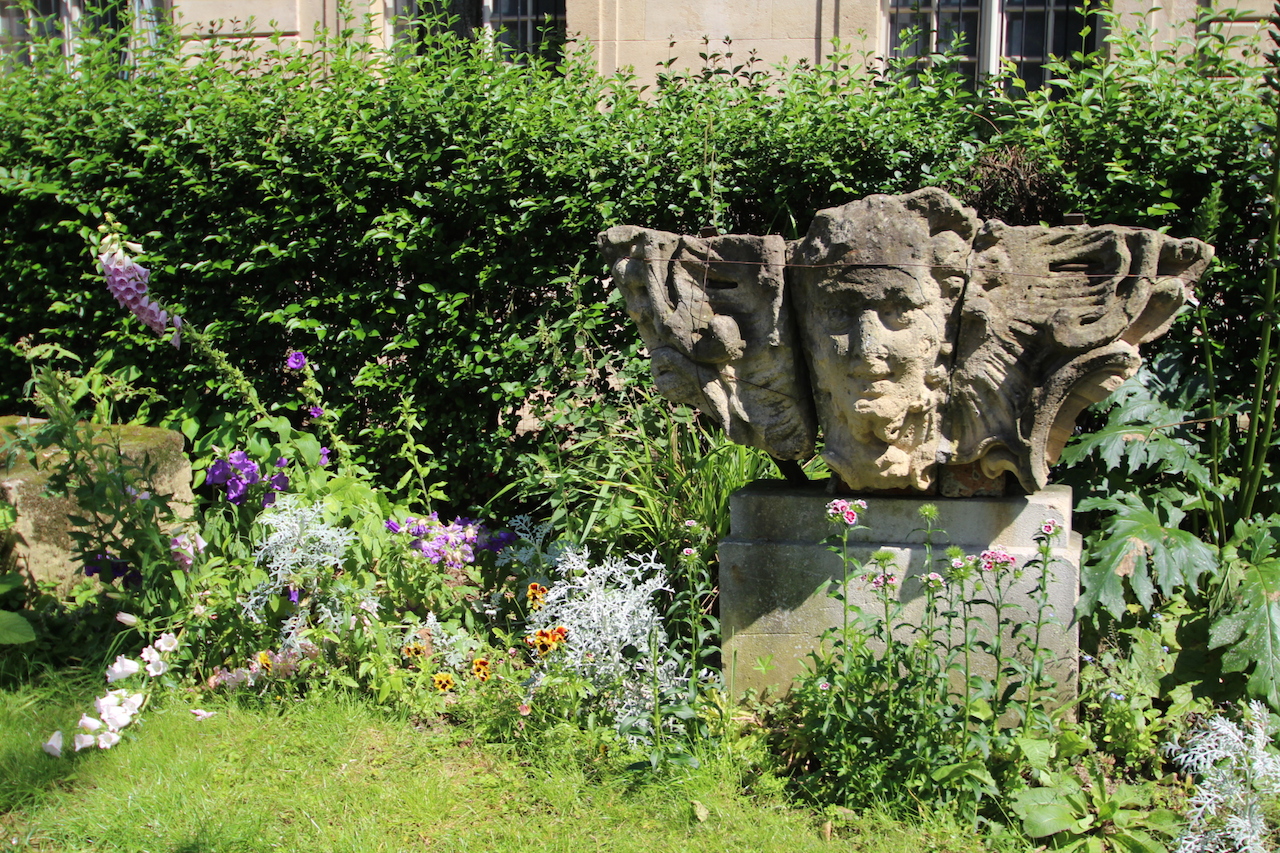
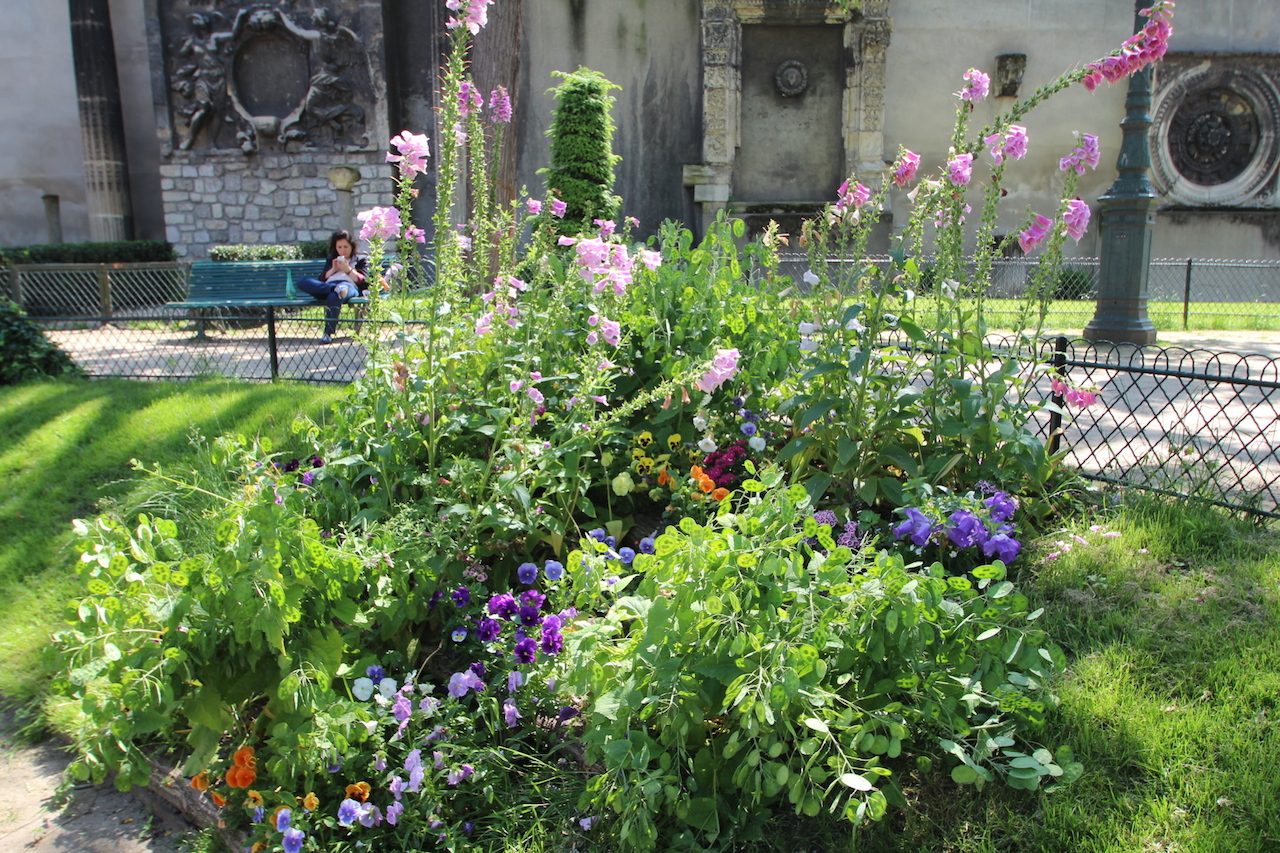
.JPG)
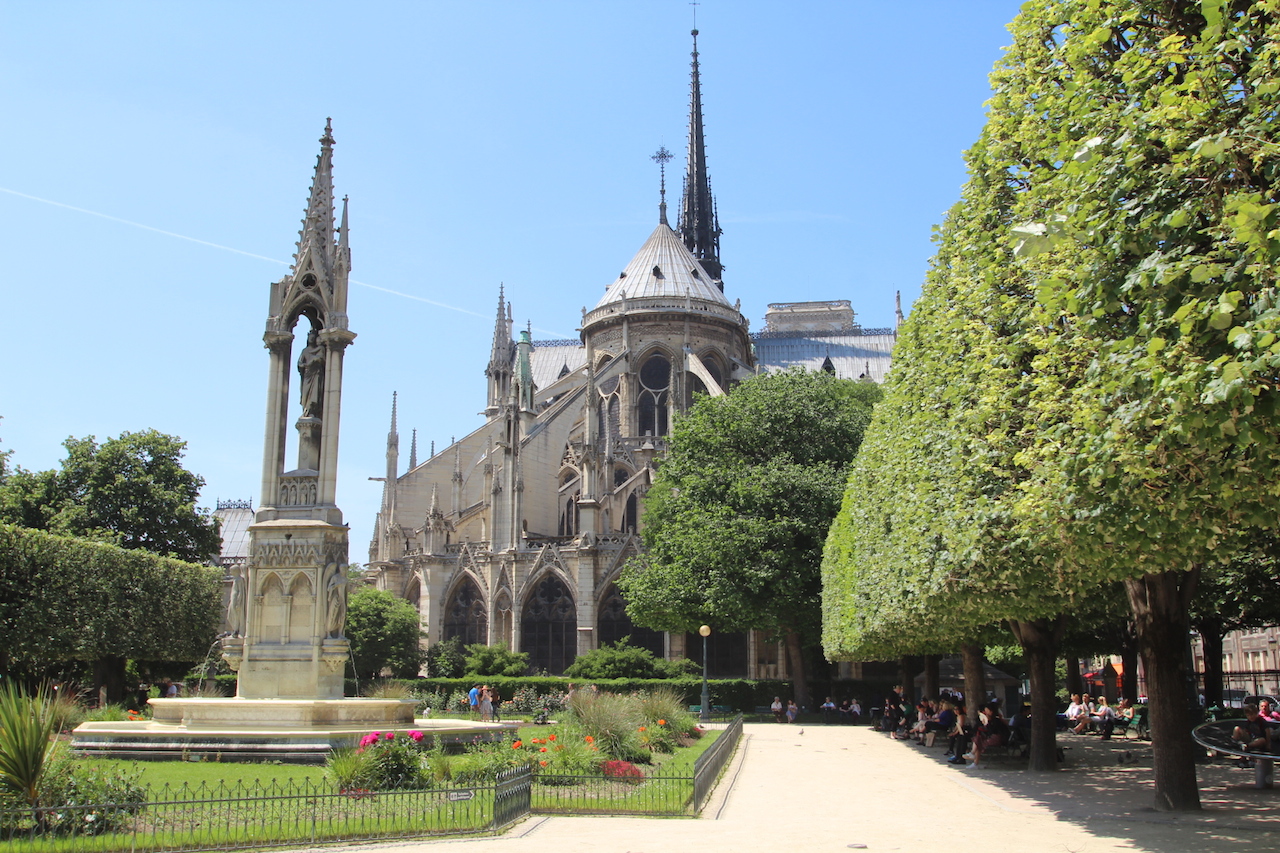
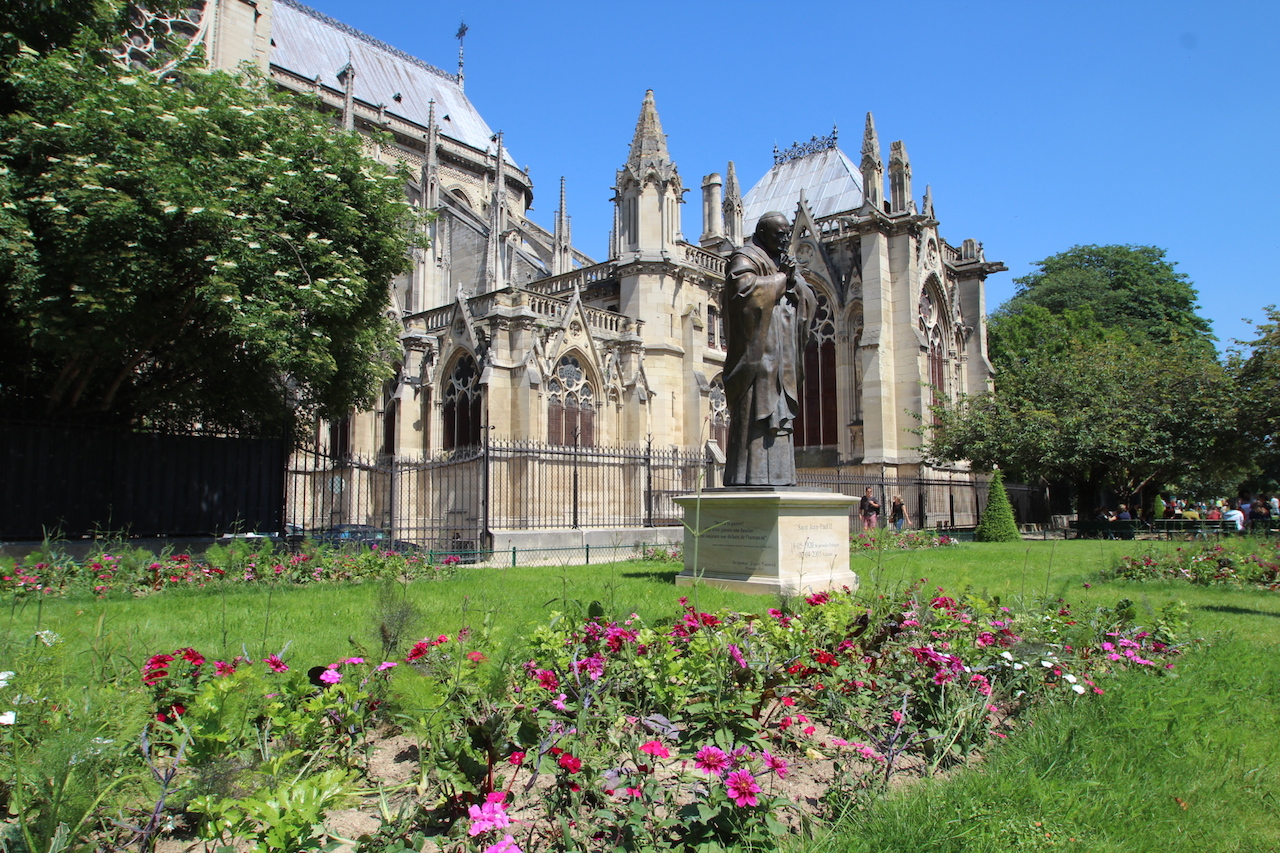
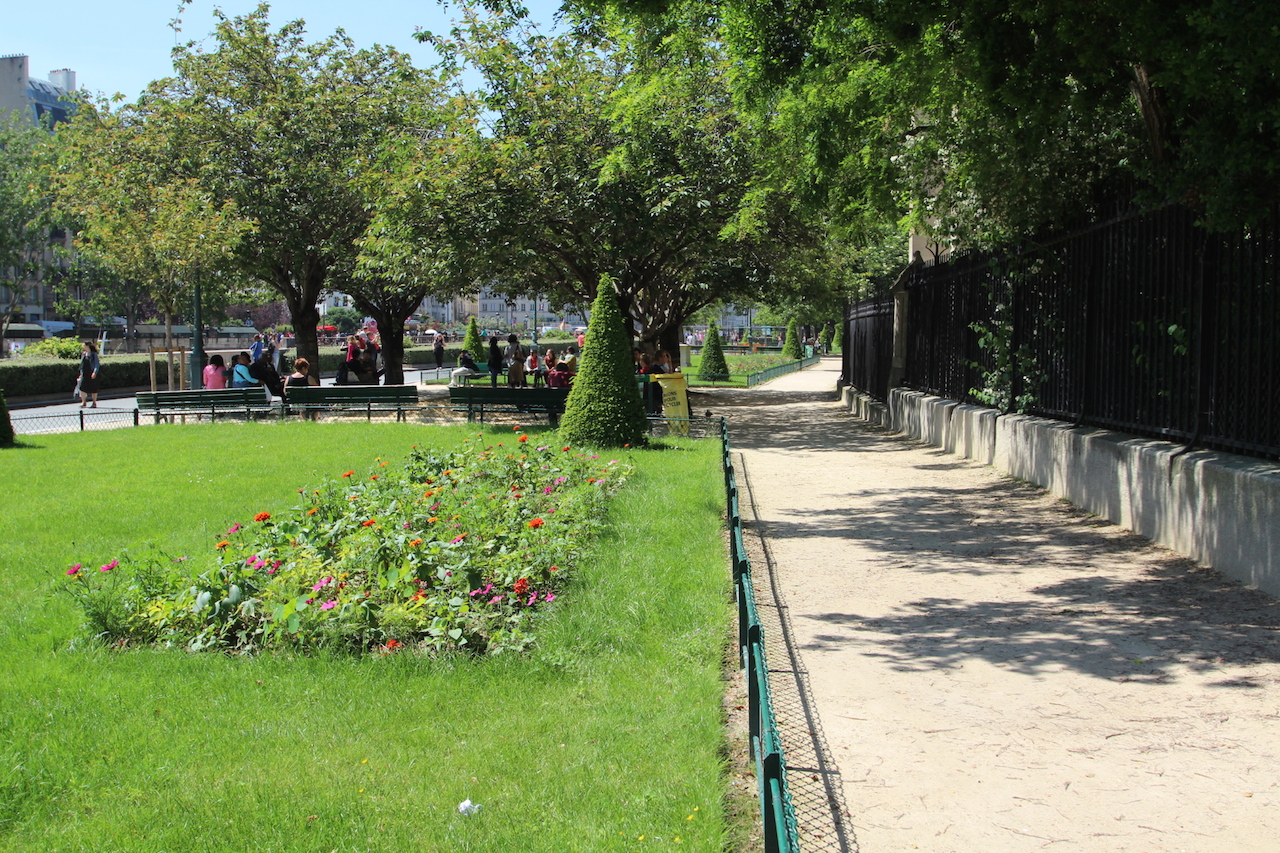
.JPG)
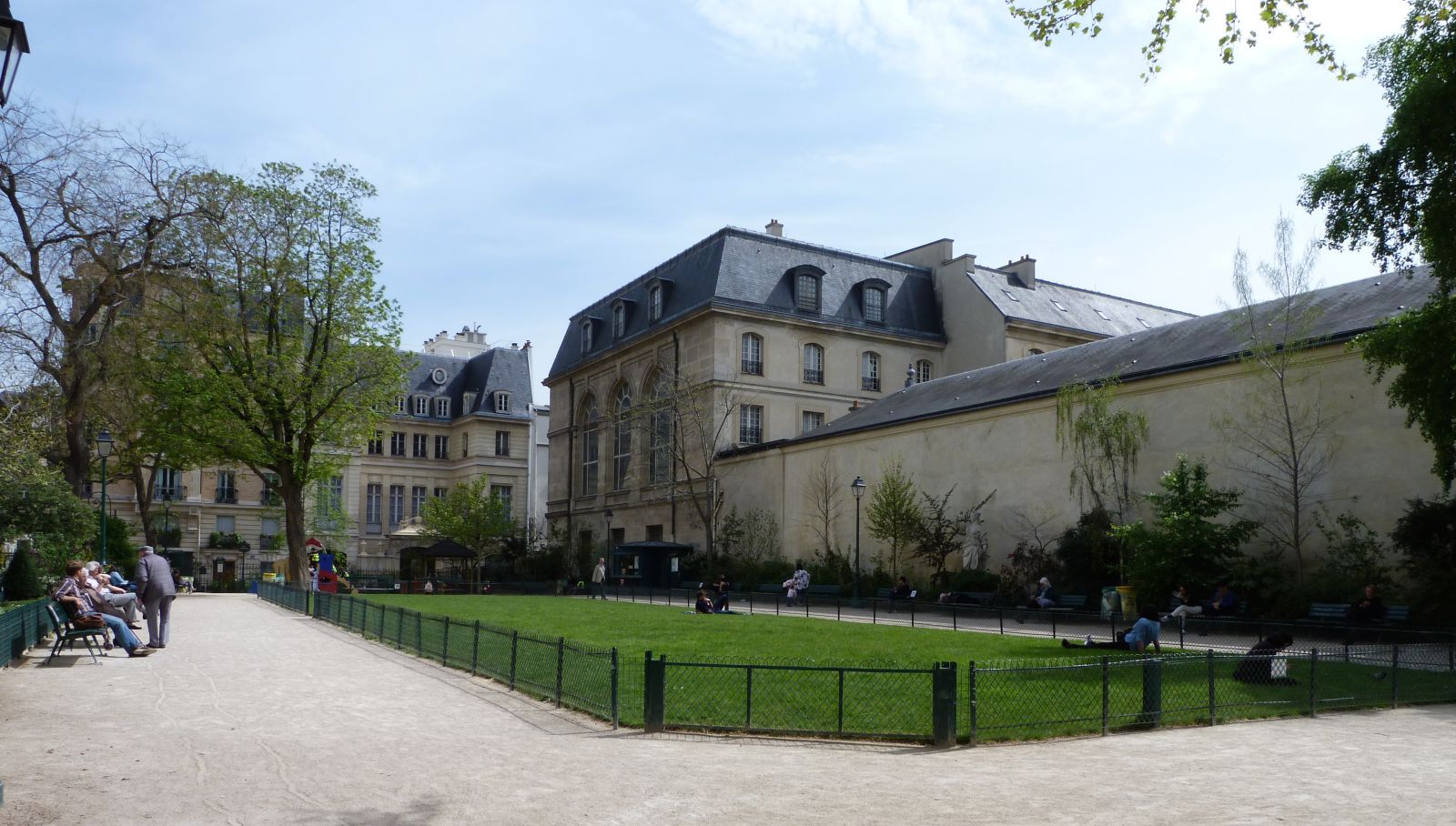
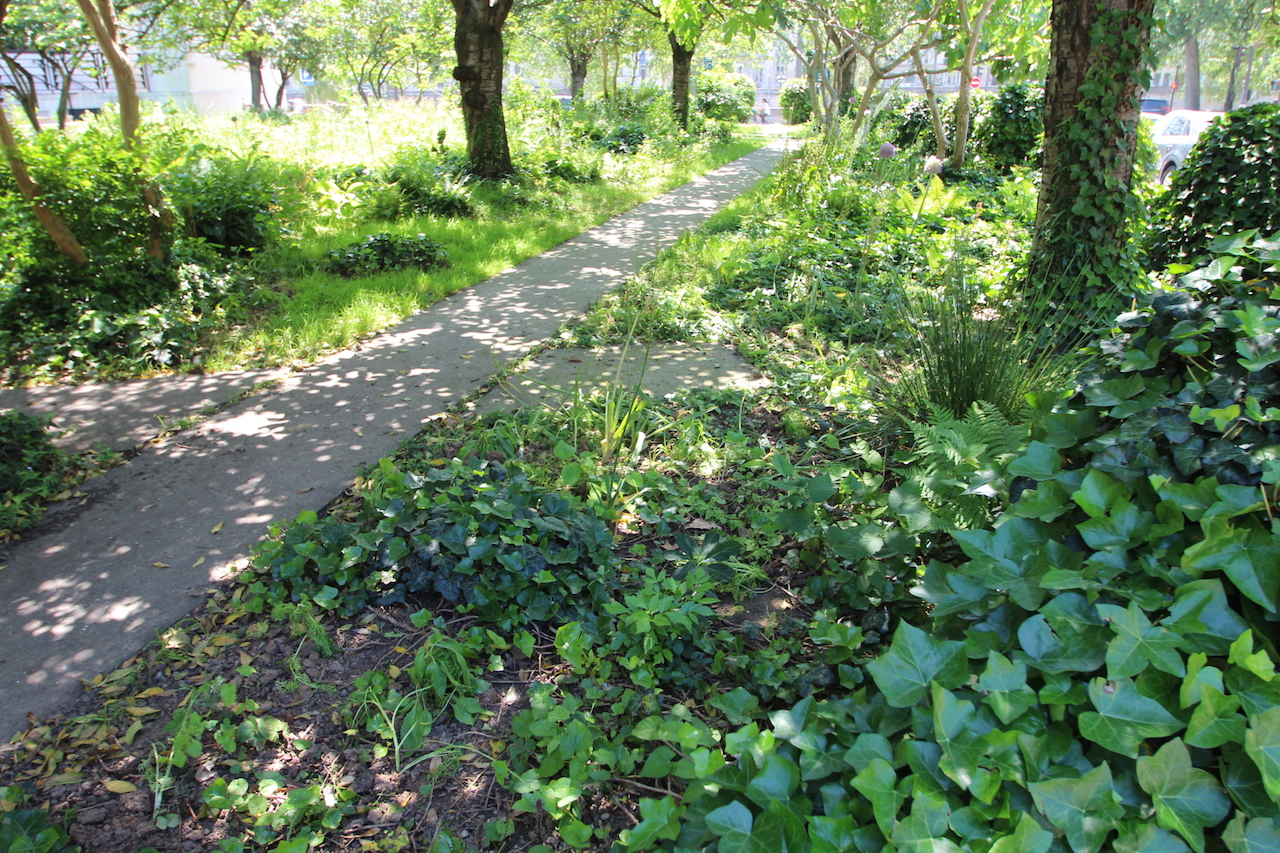
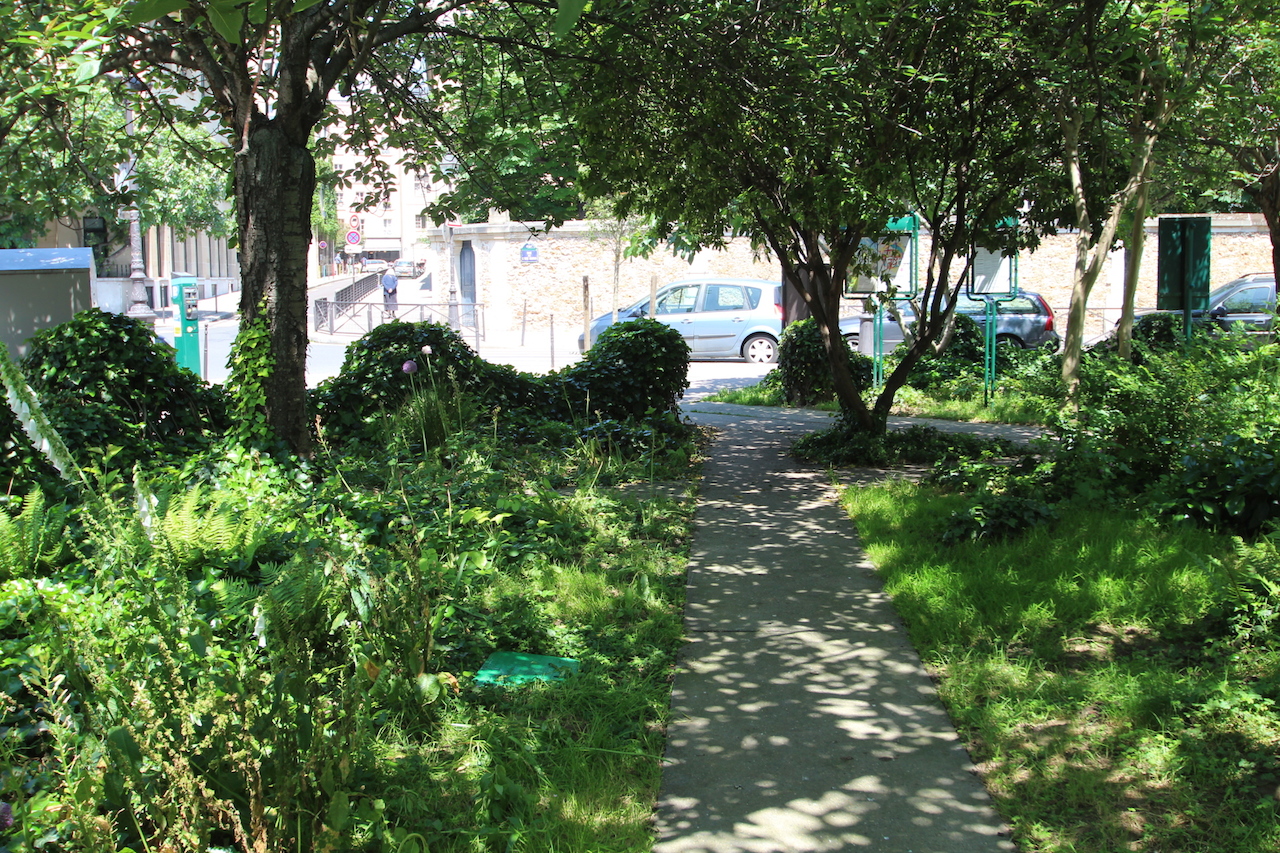
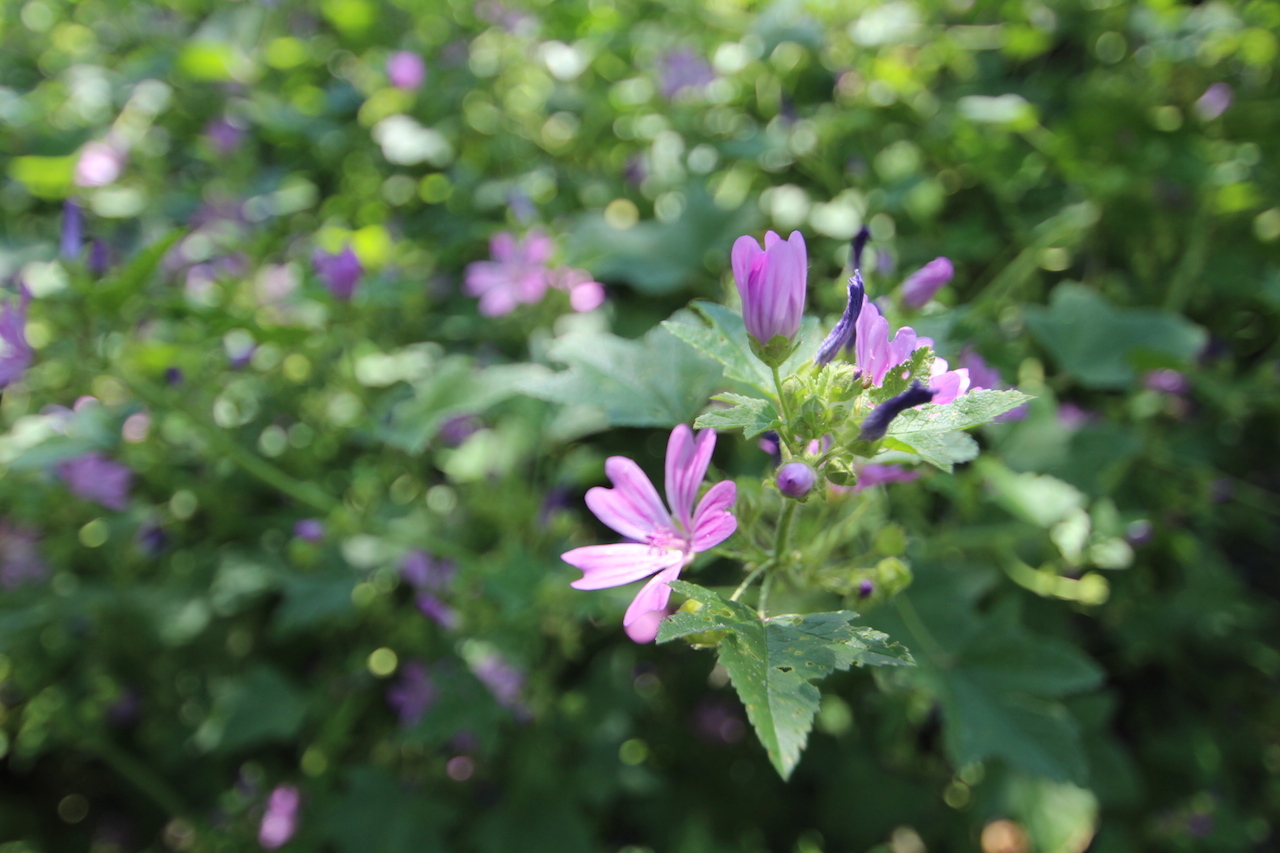
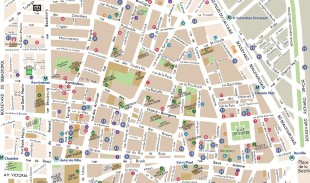


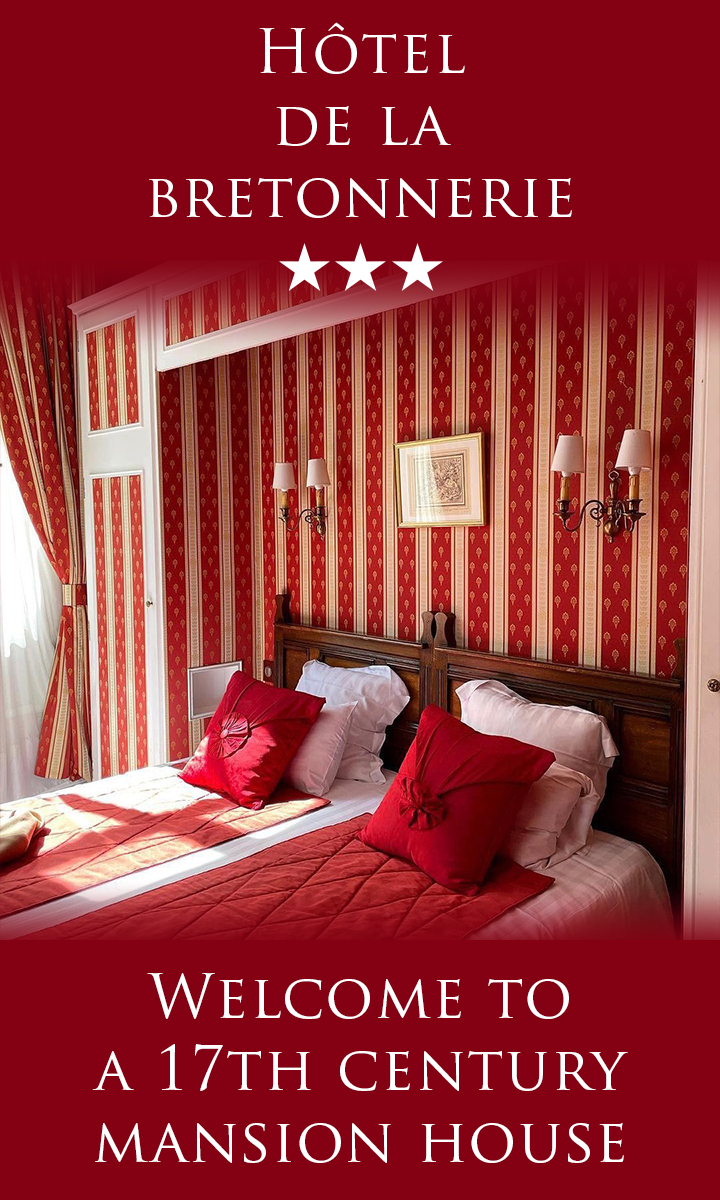
.jpg)
